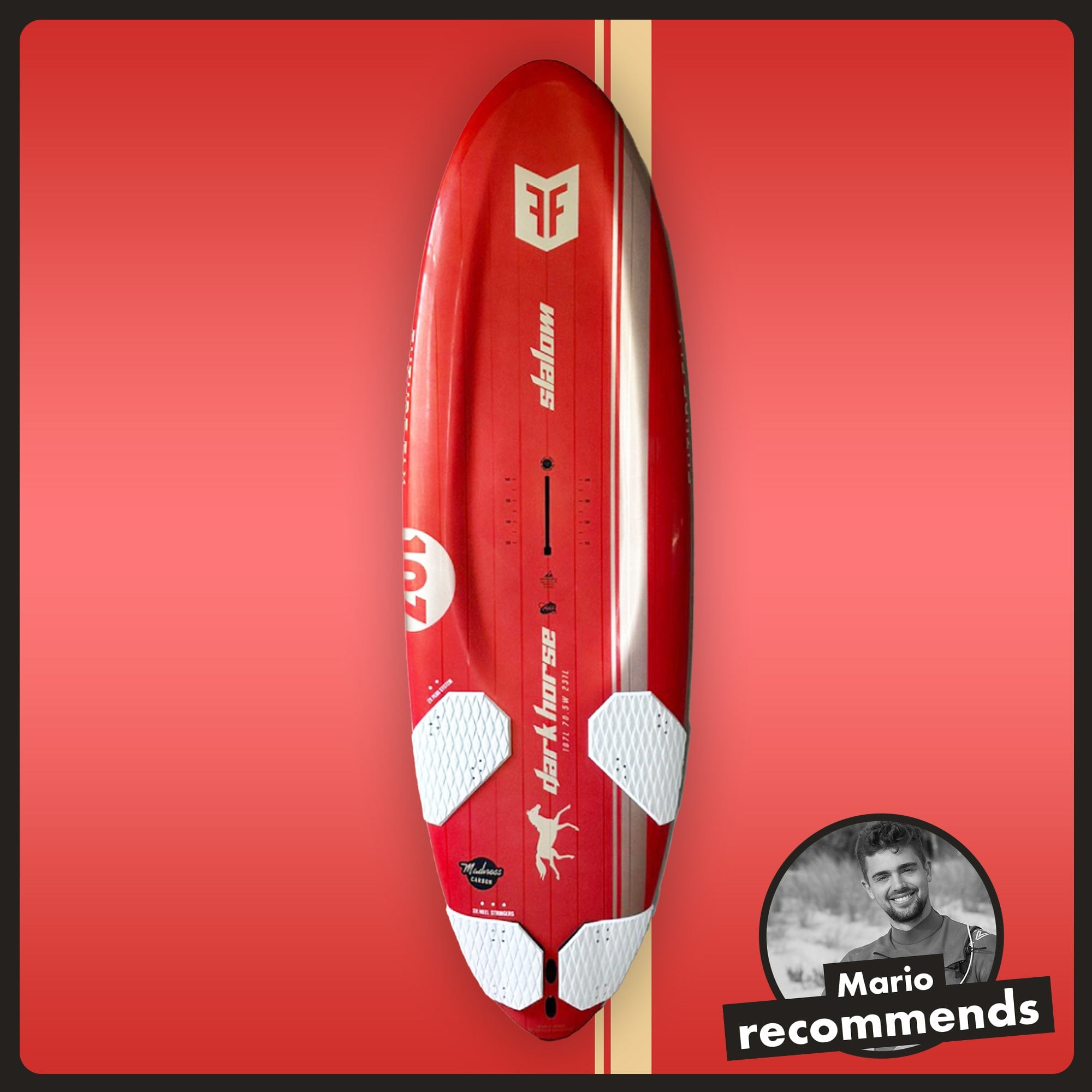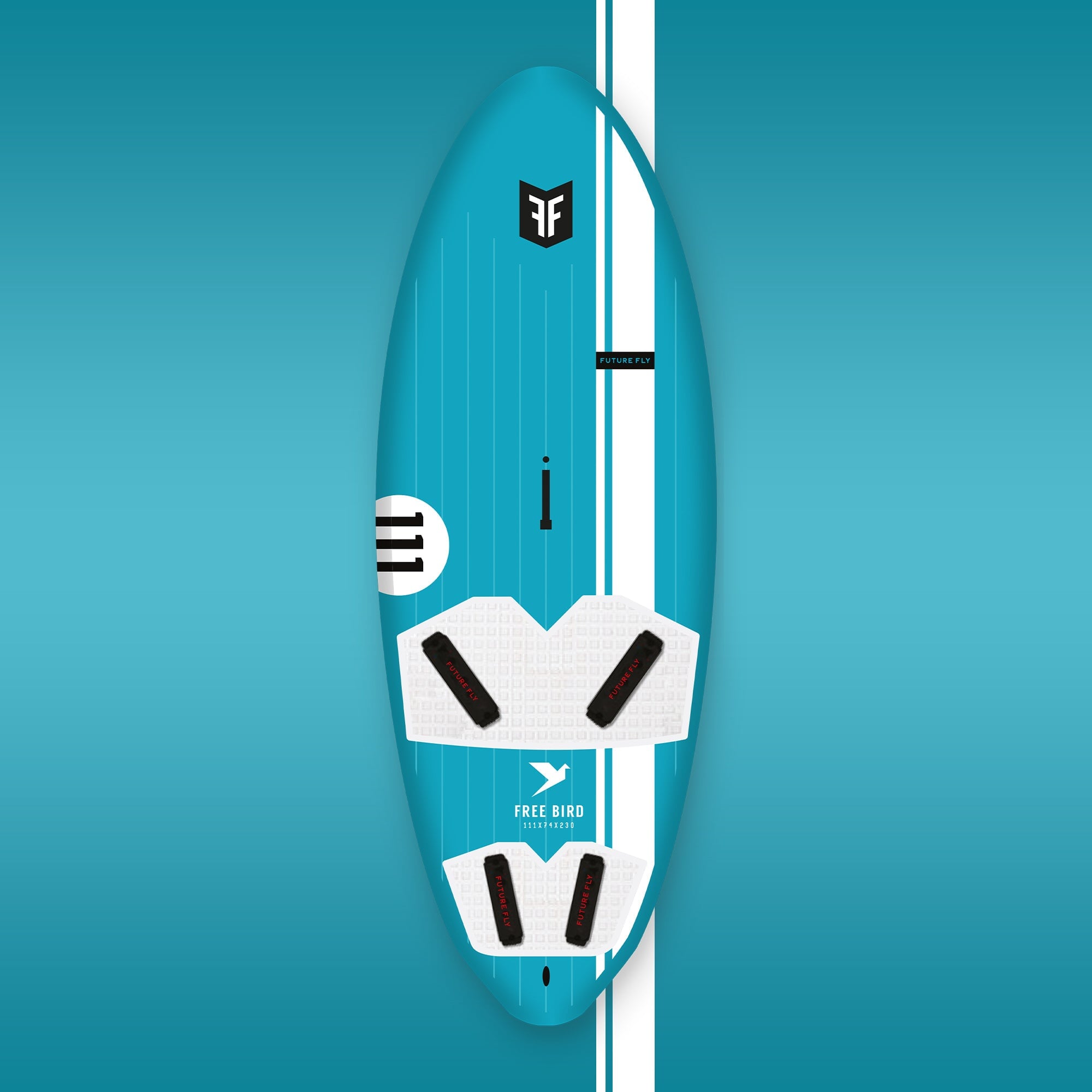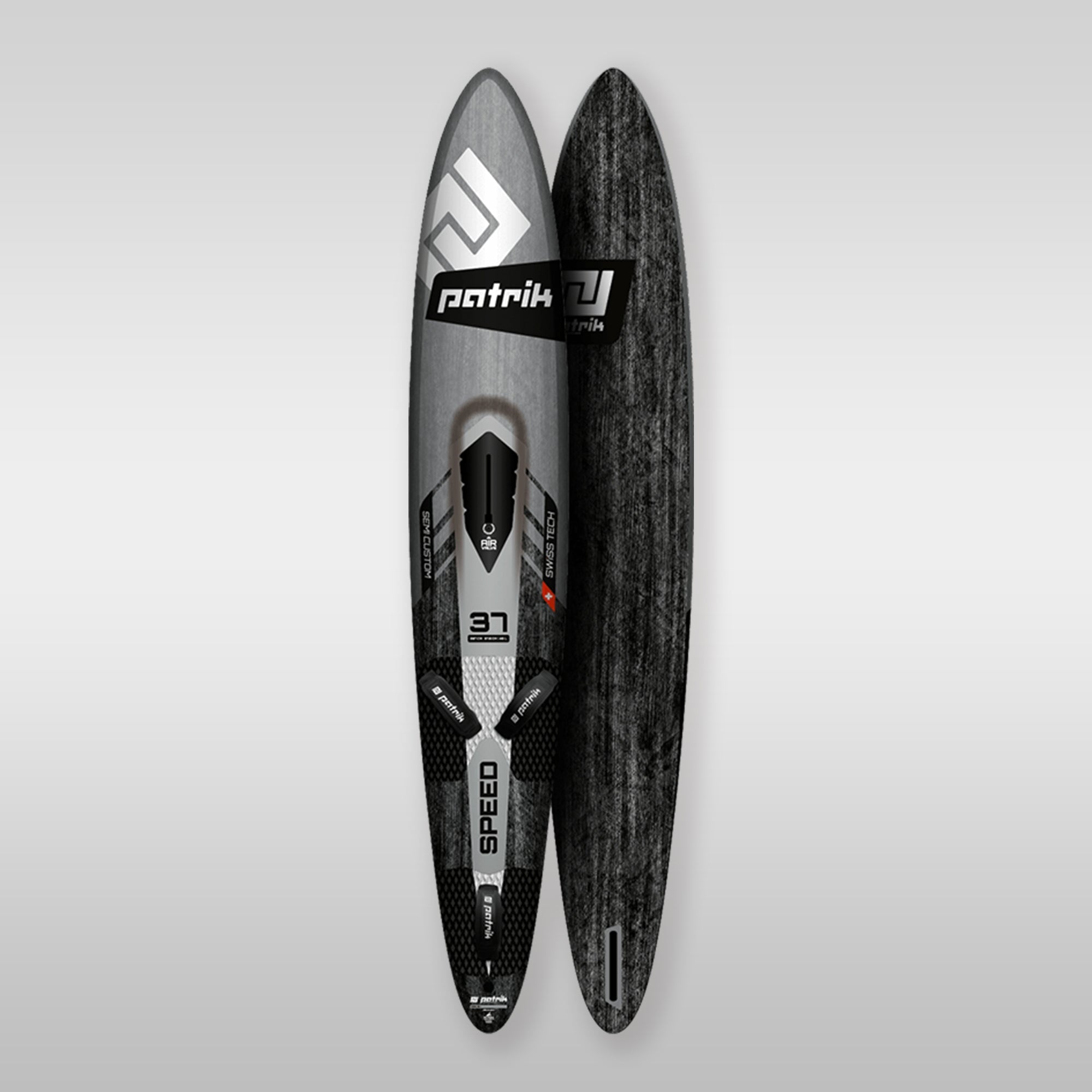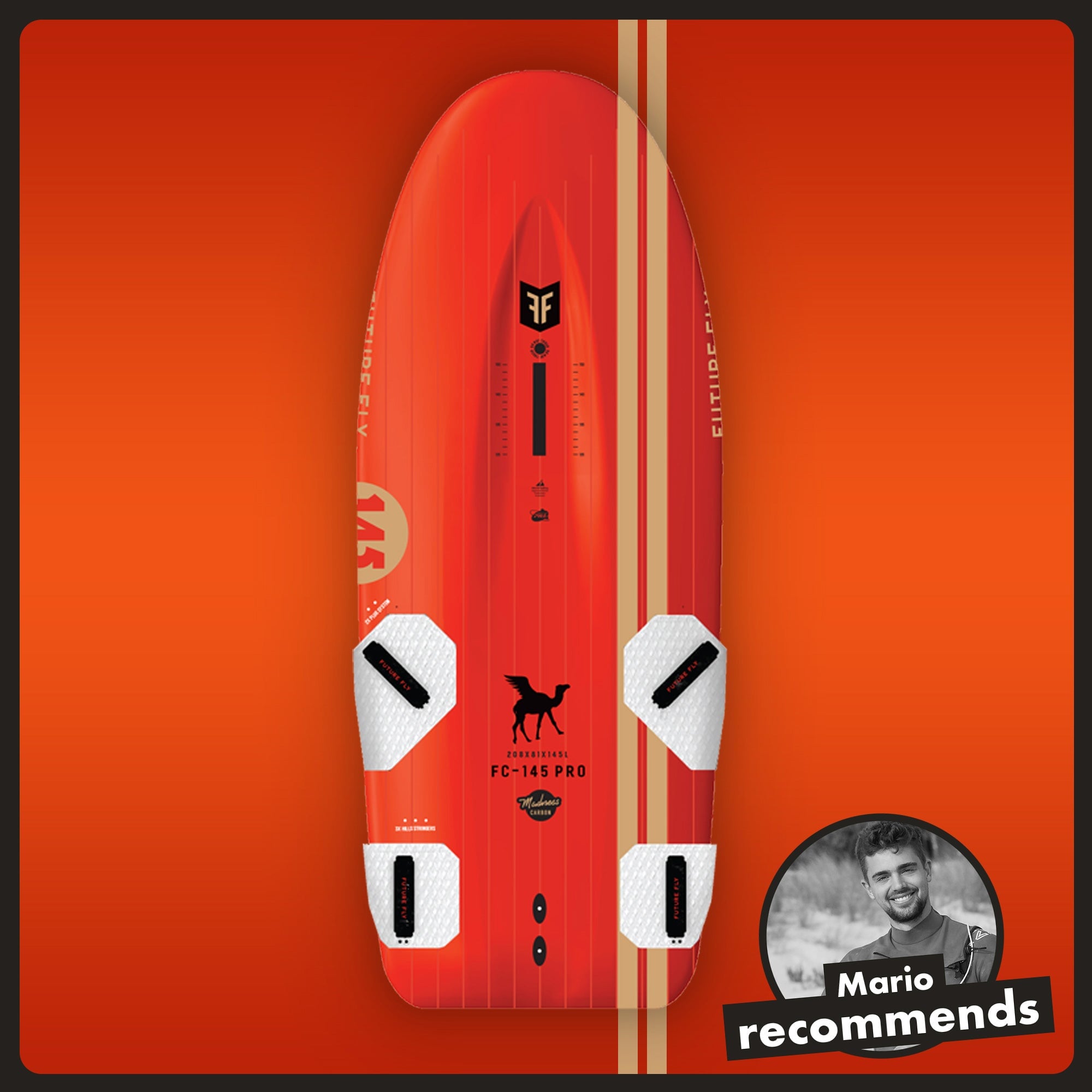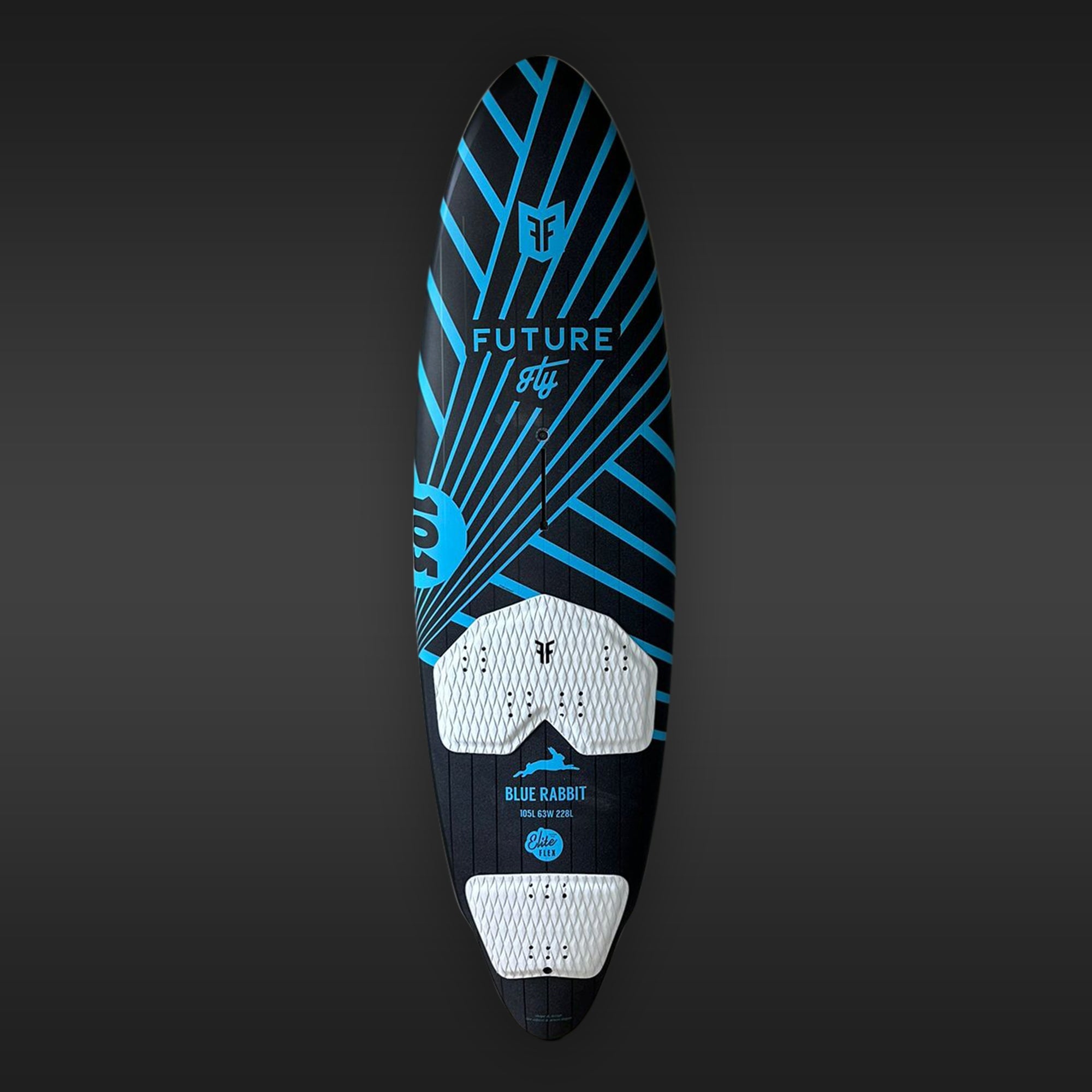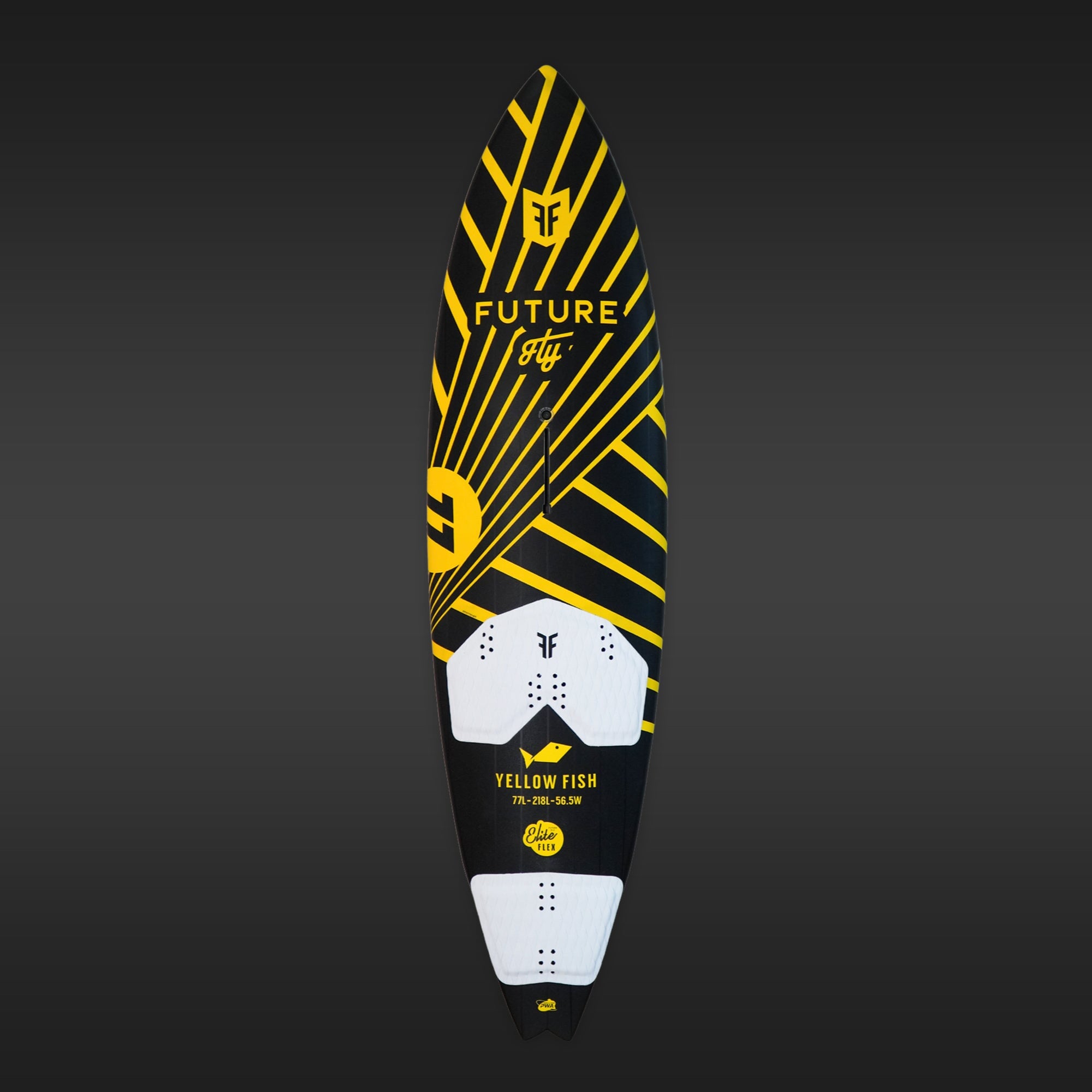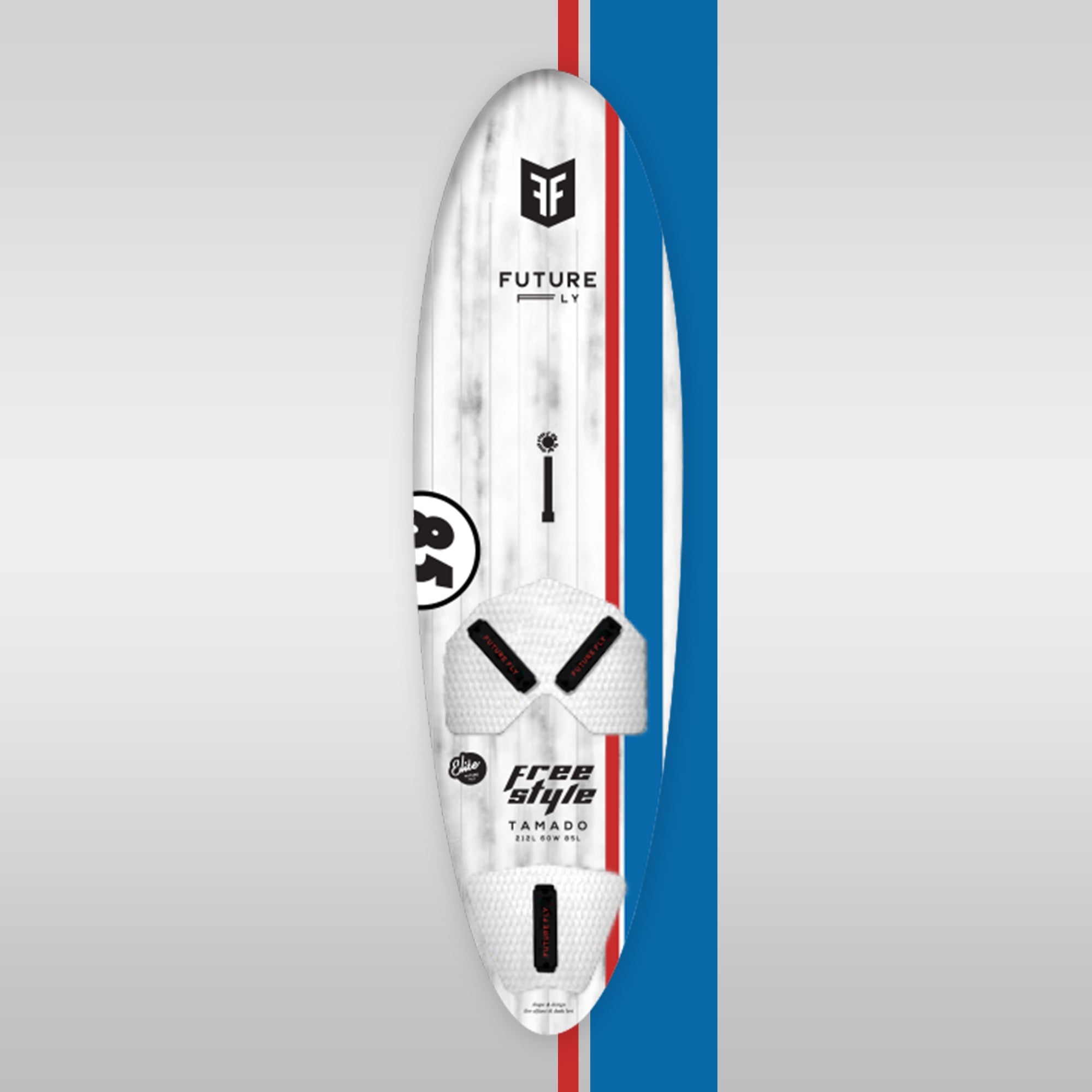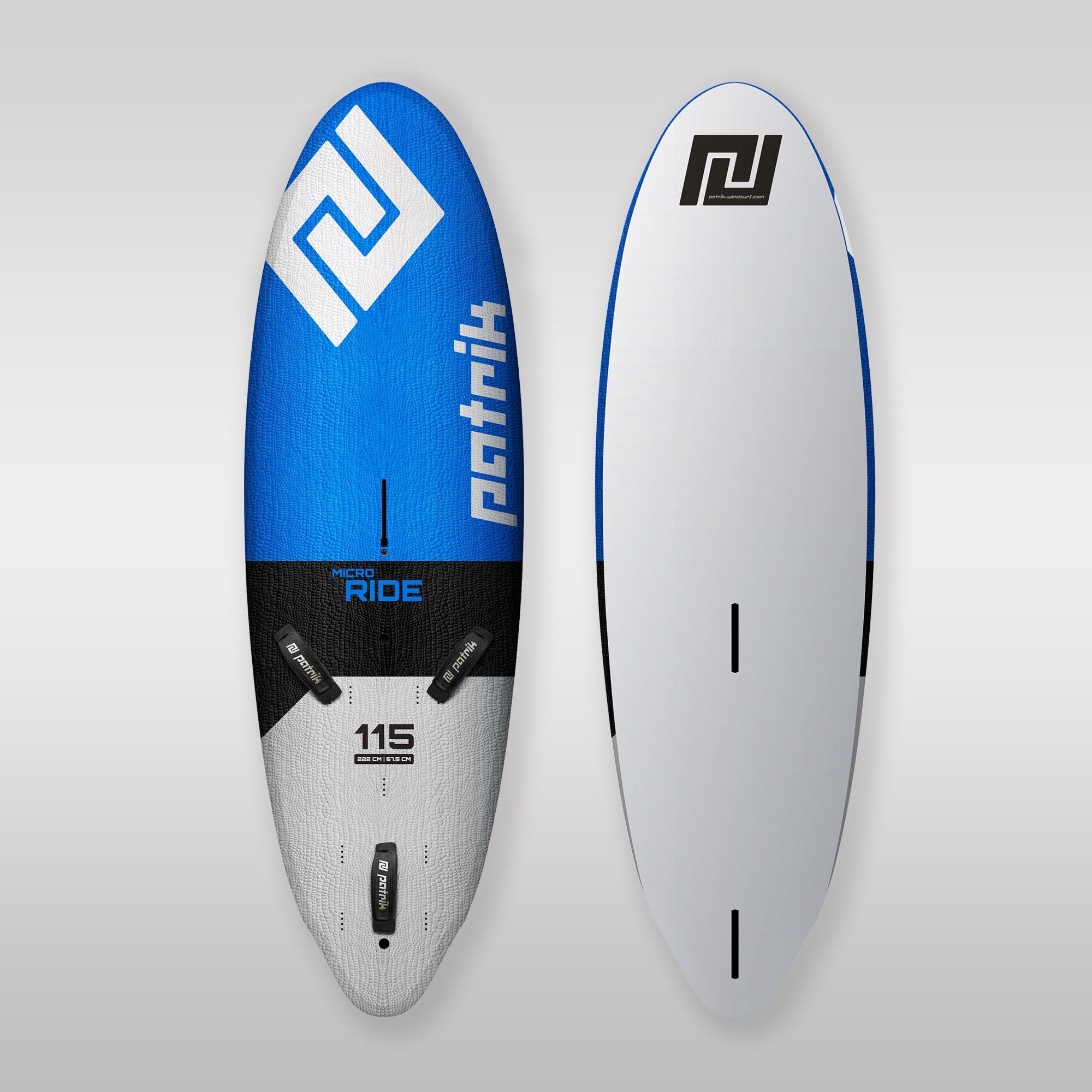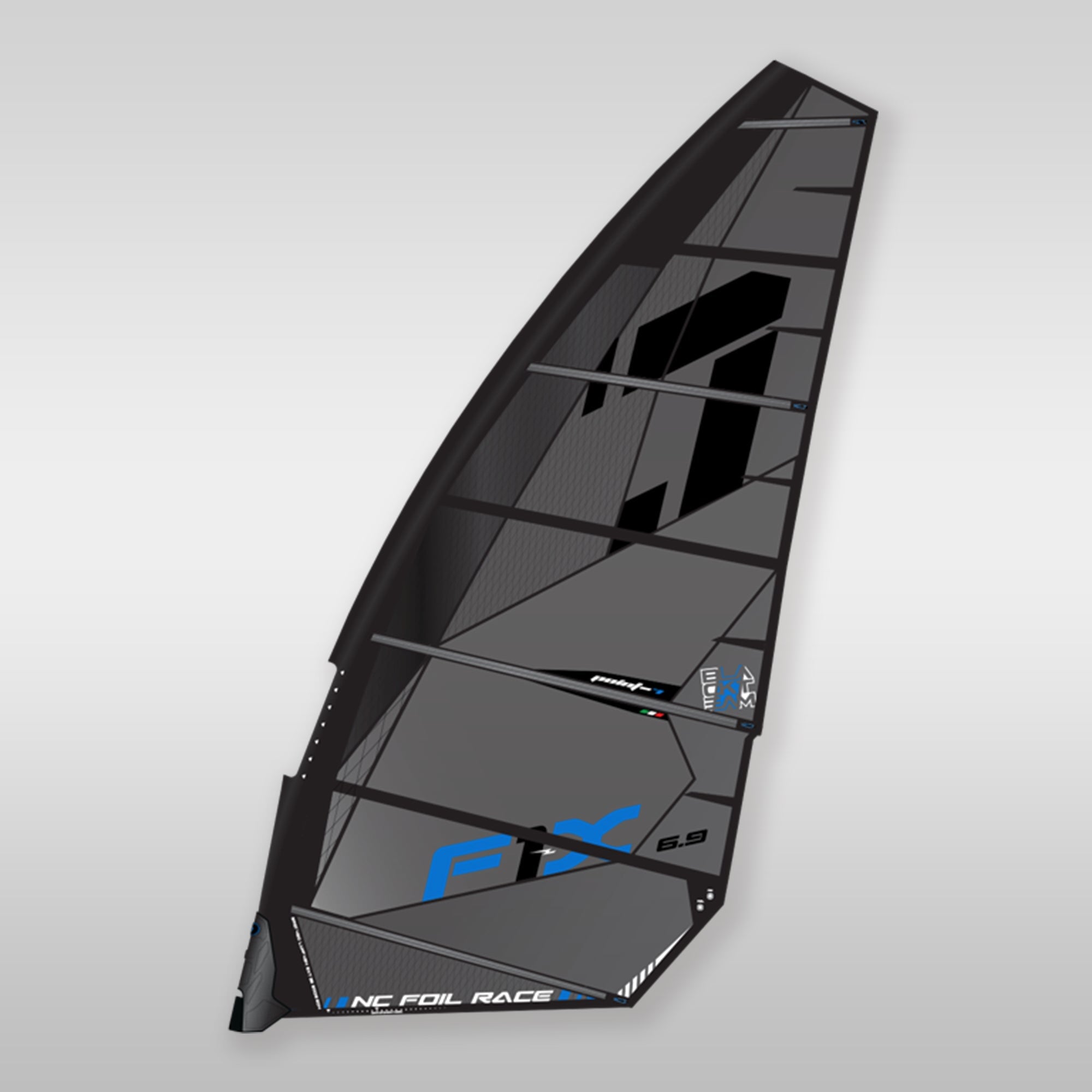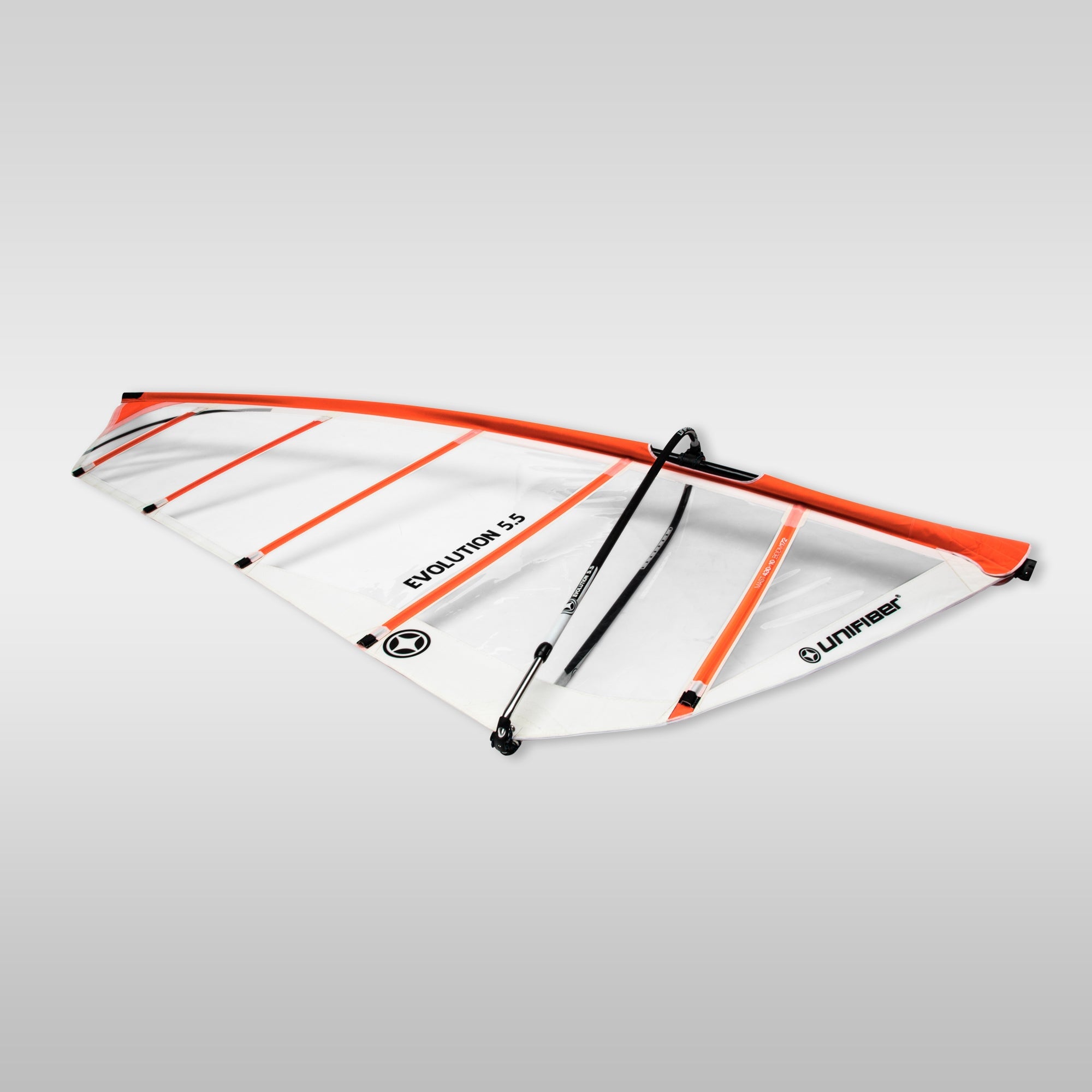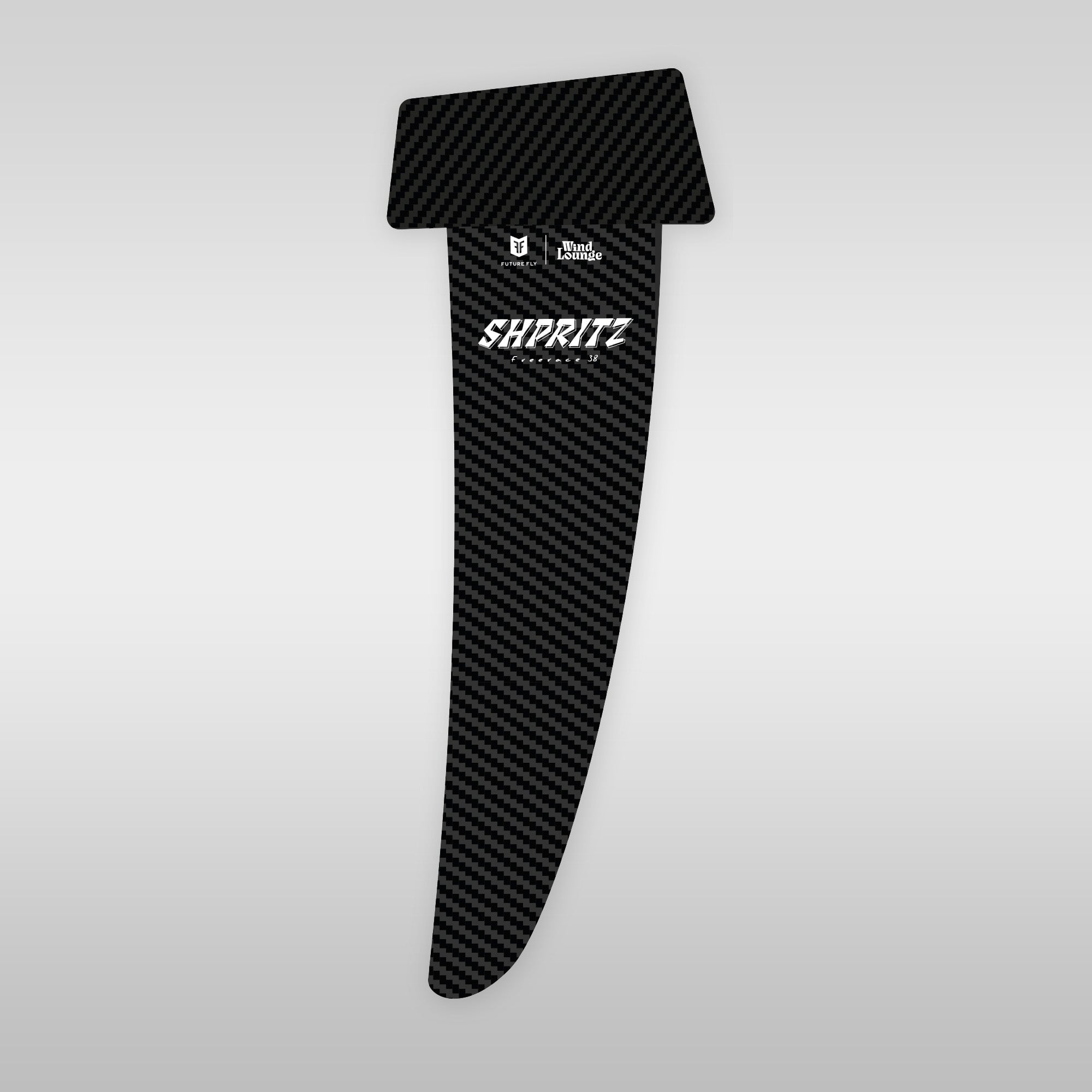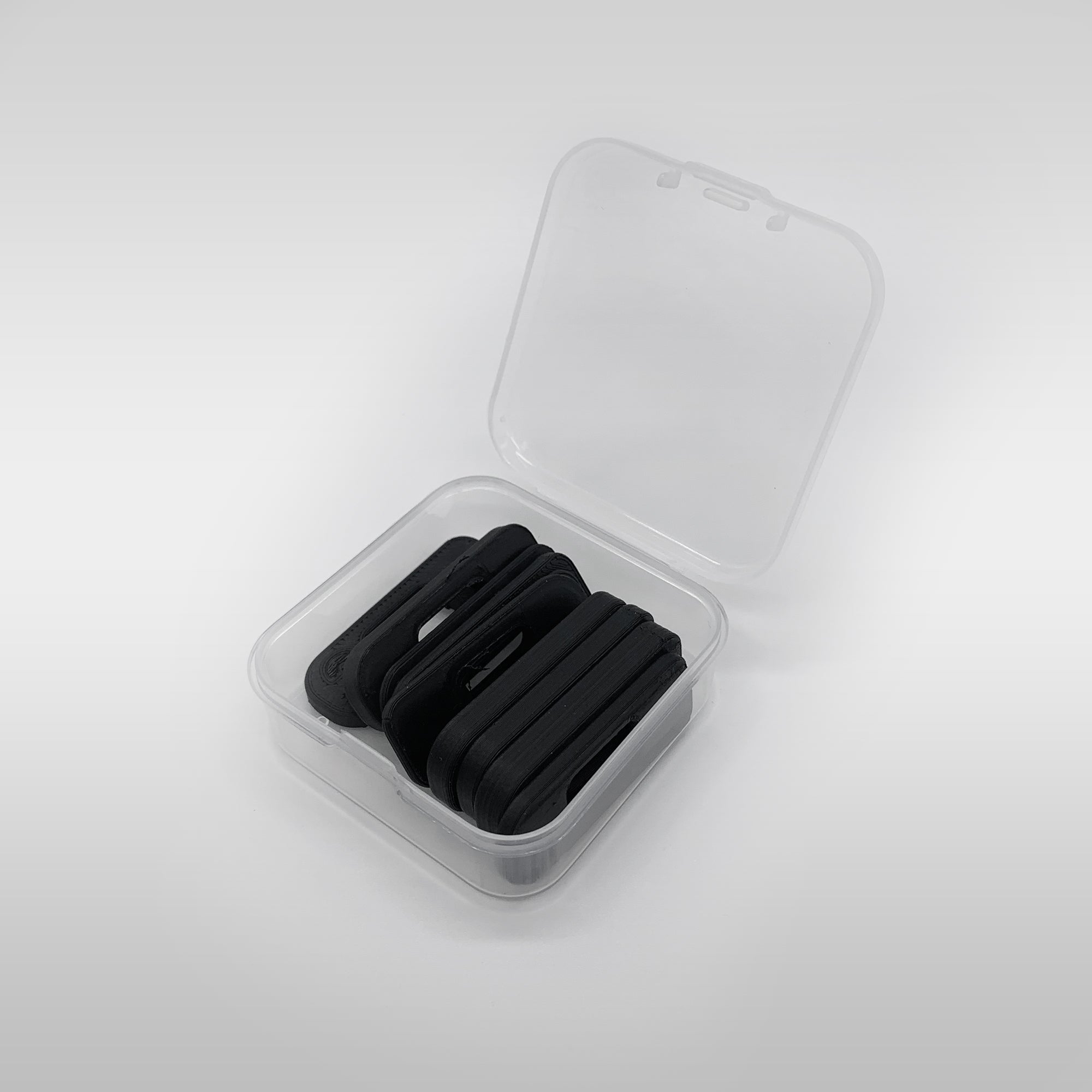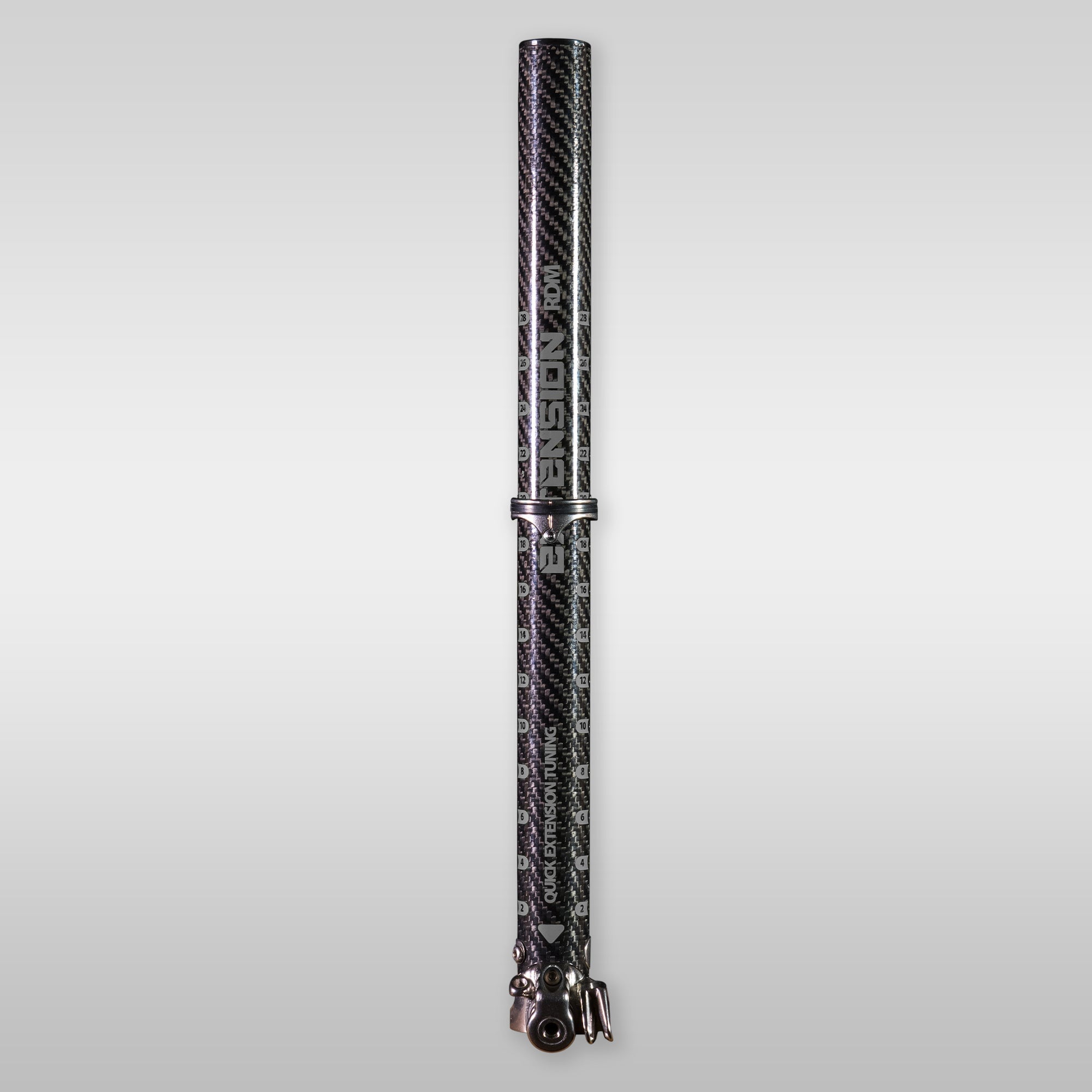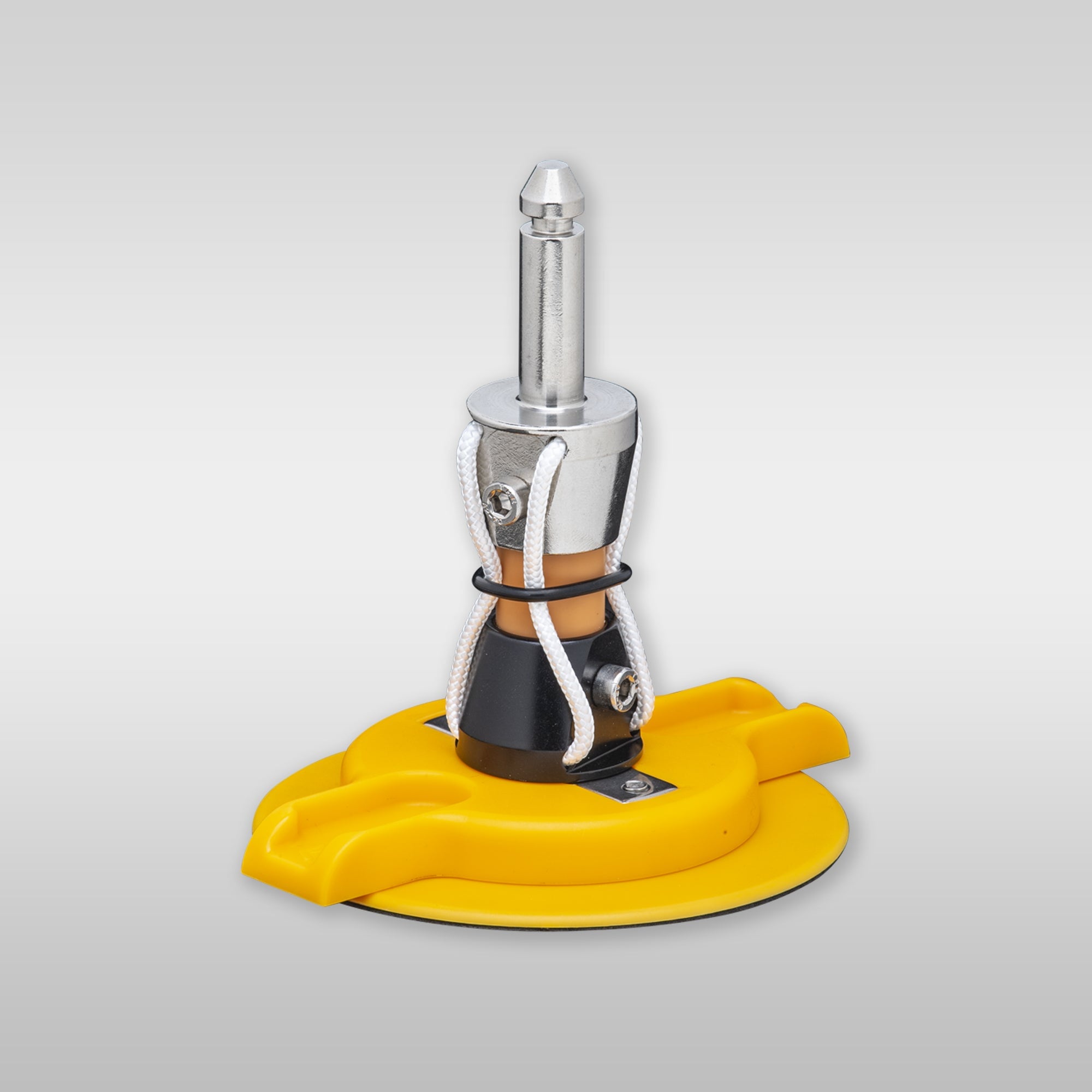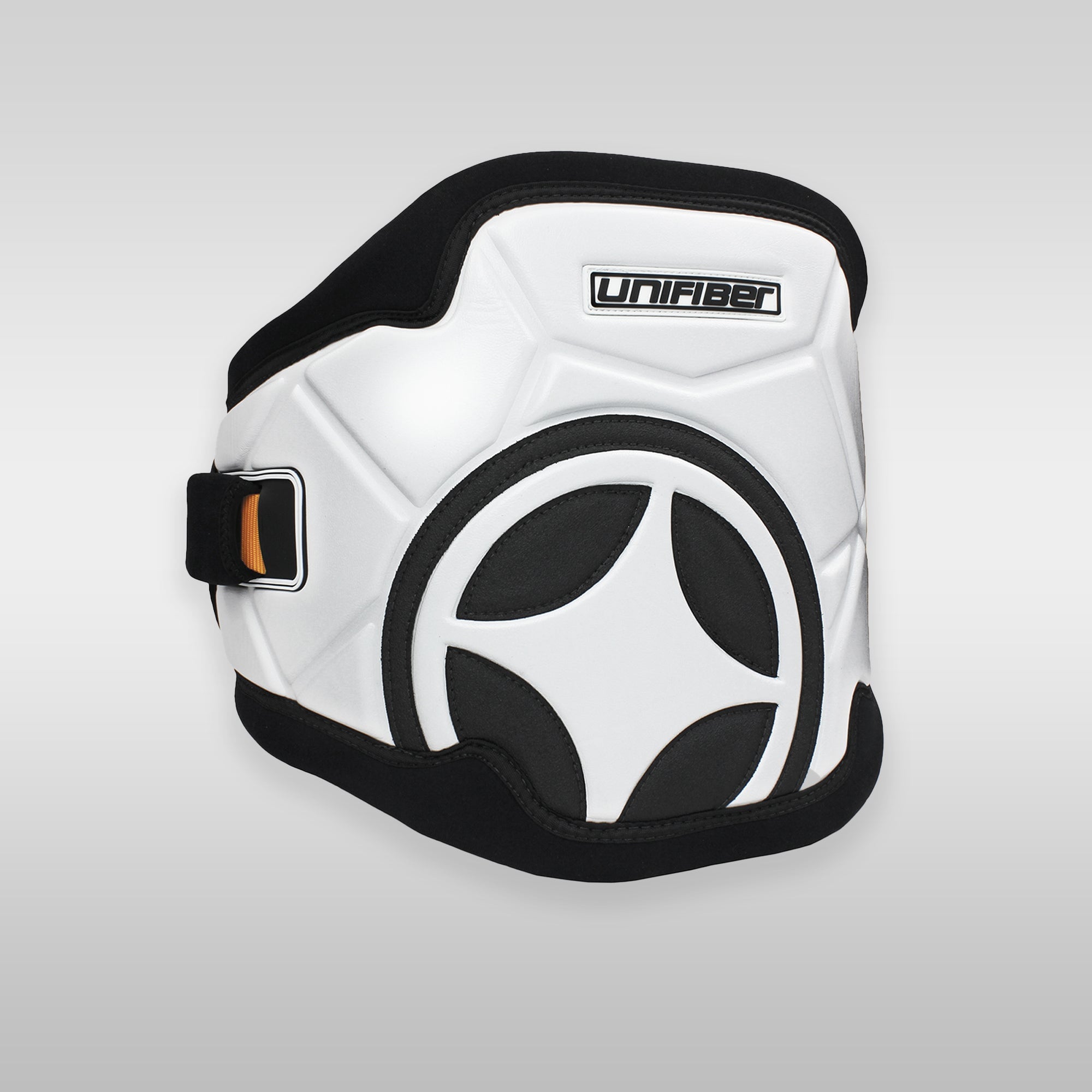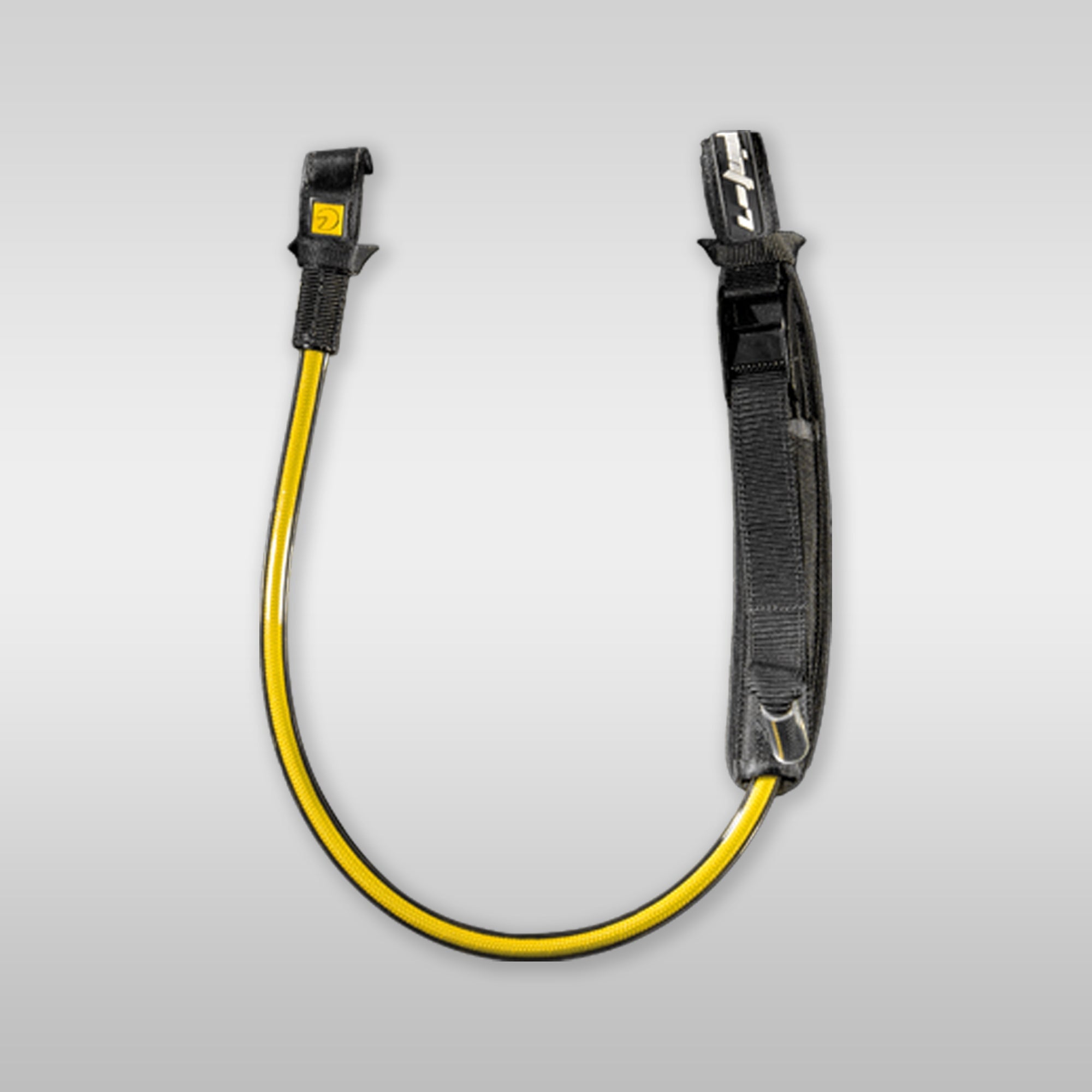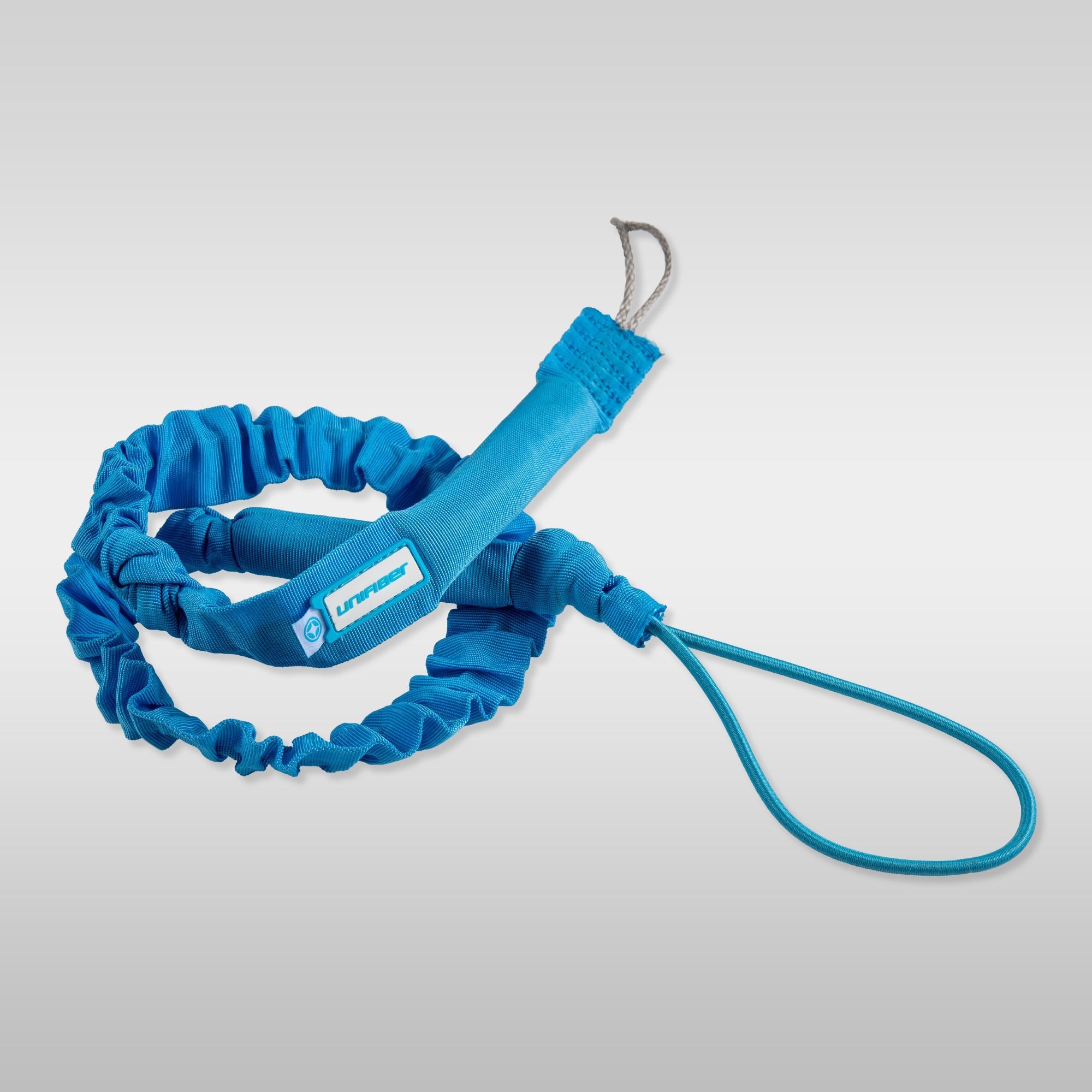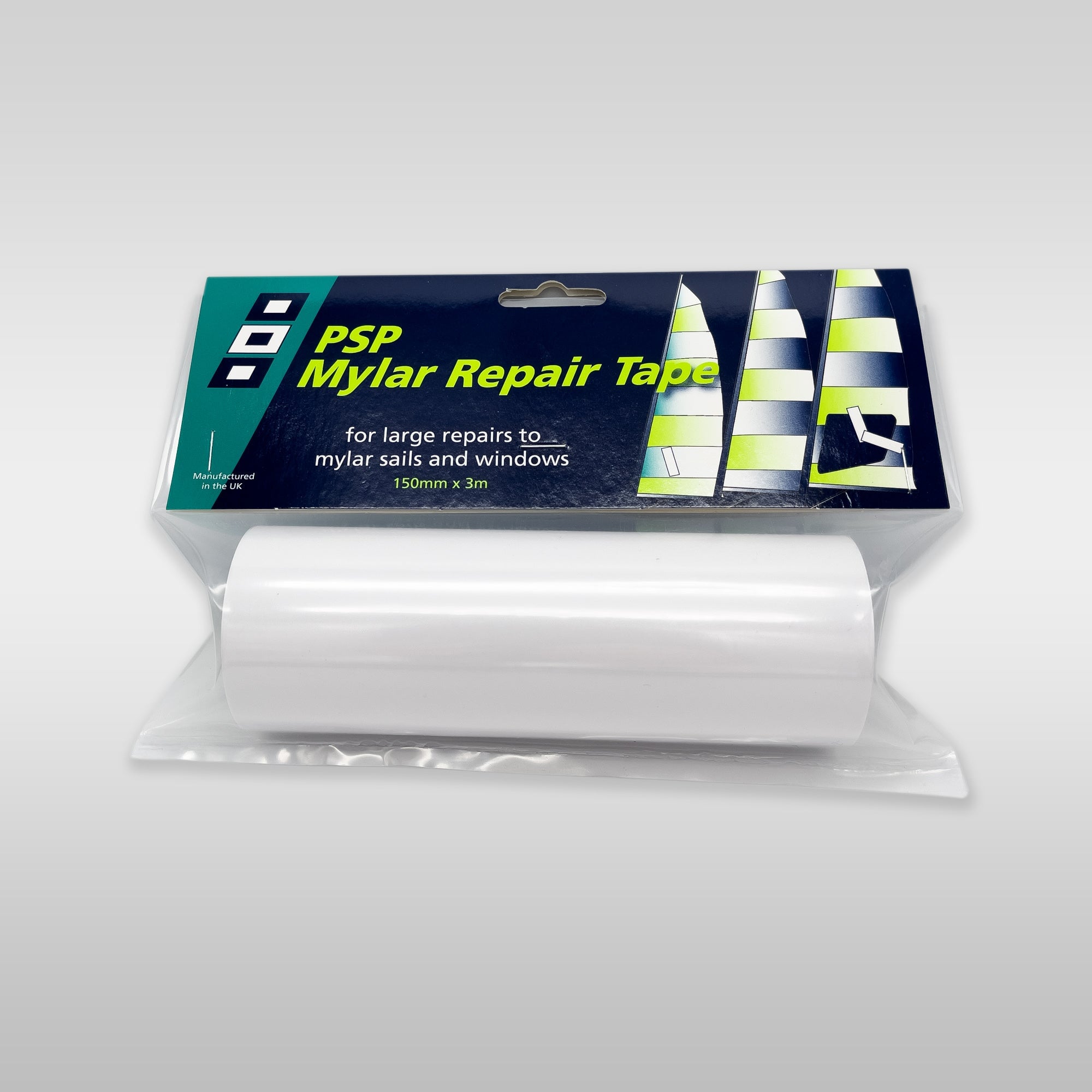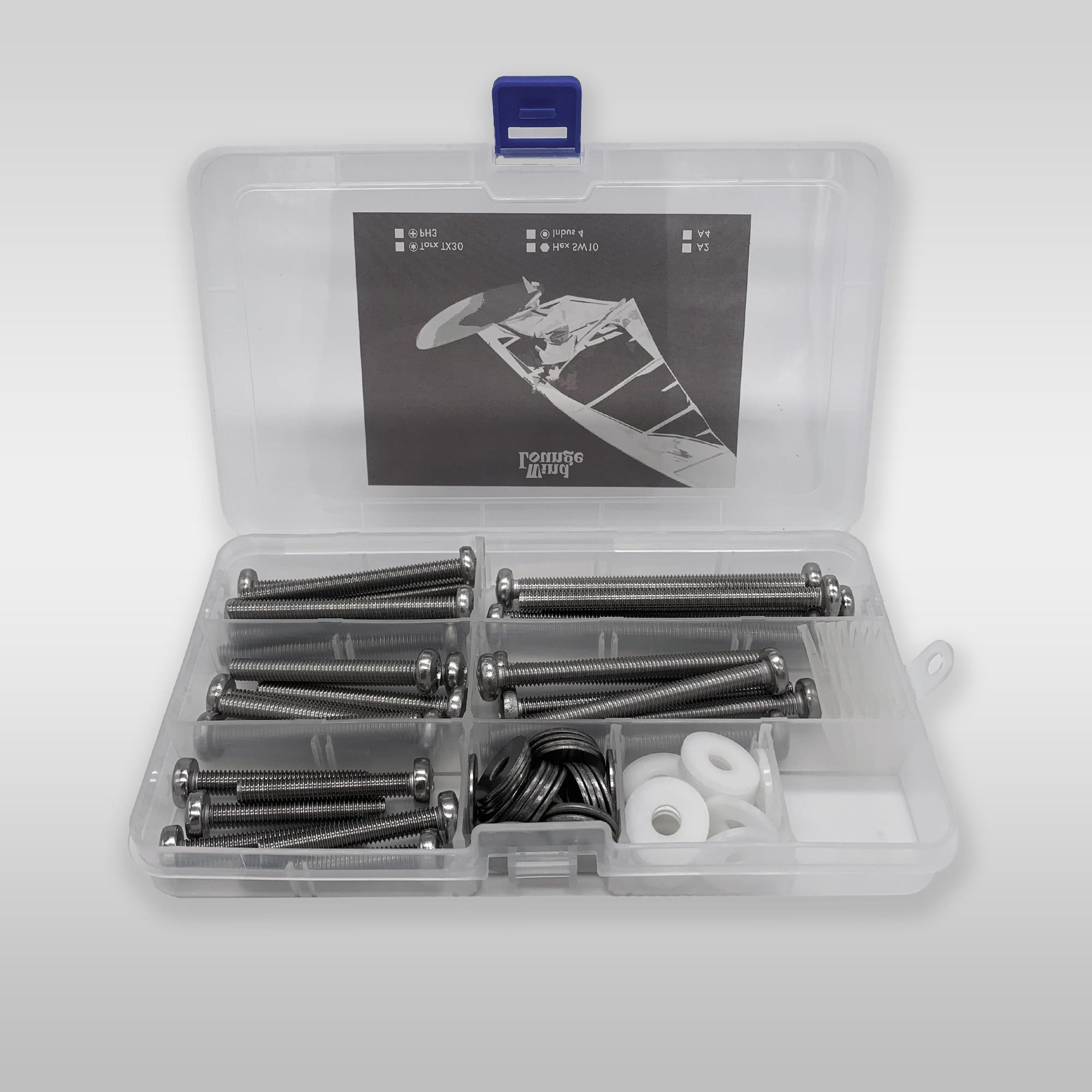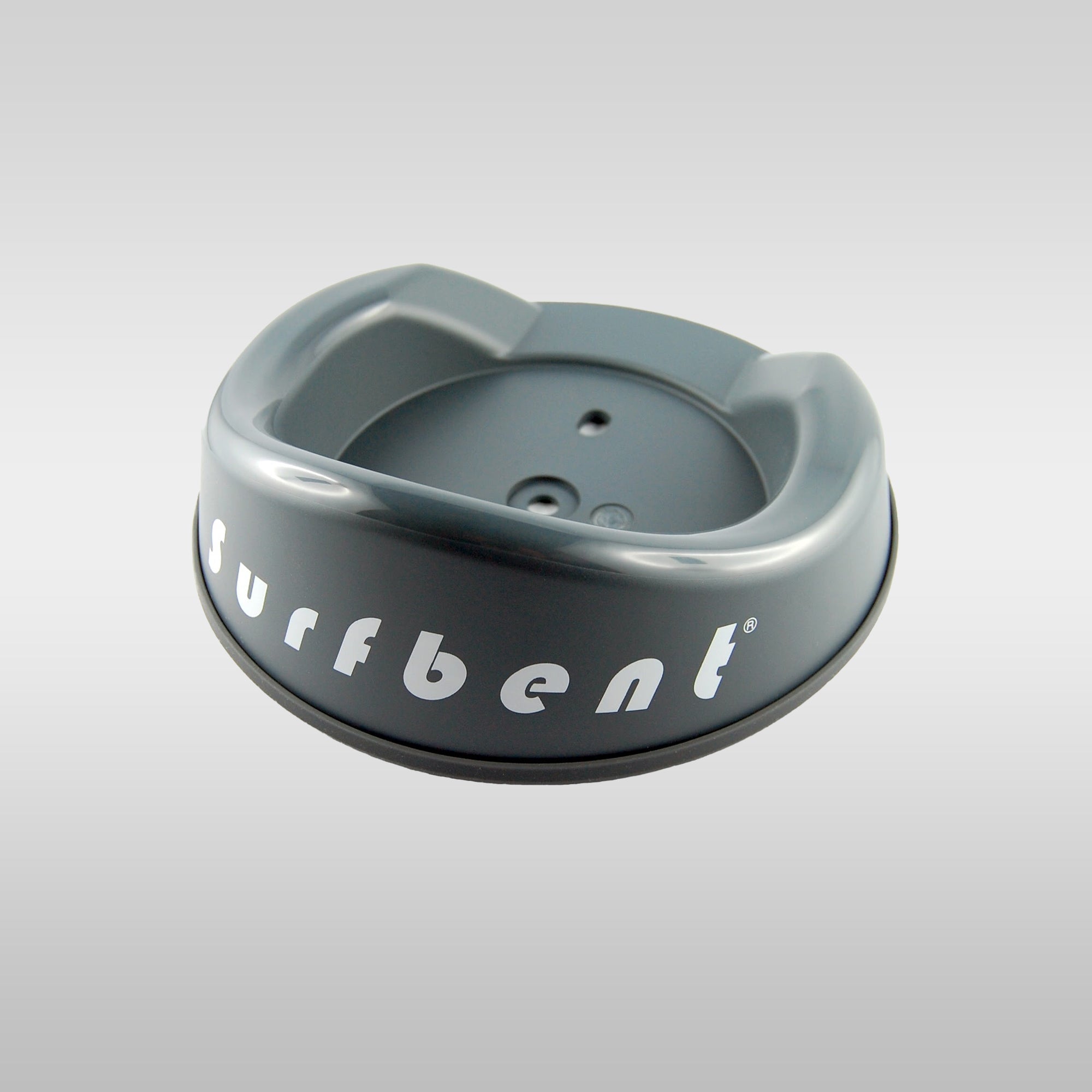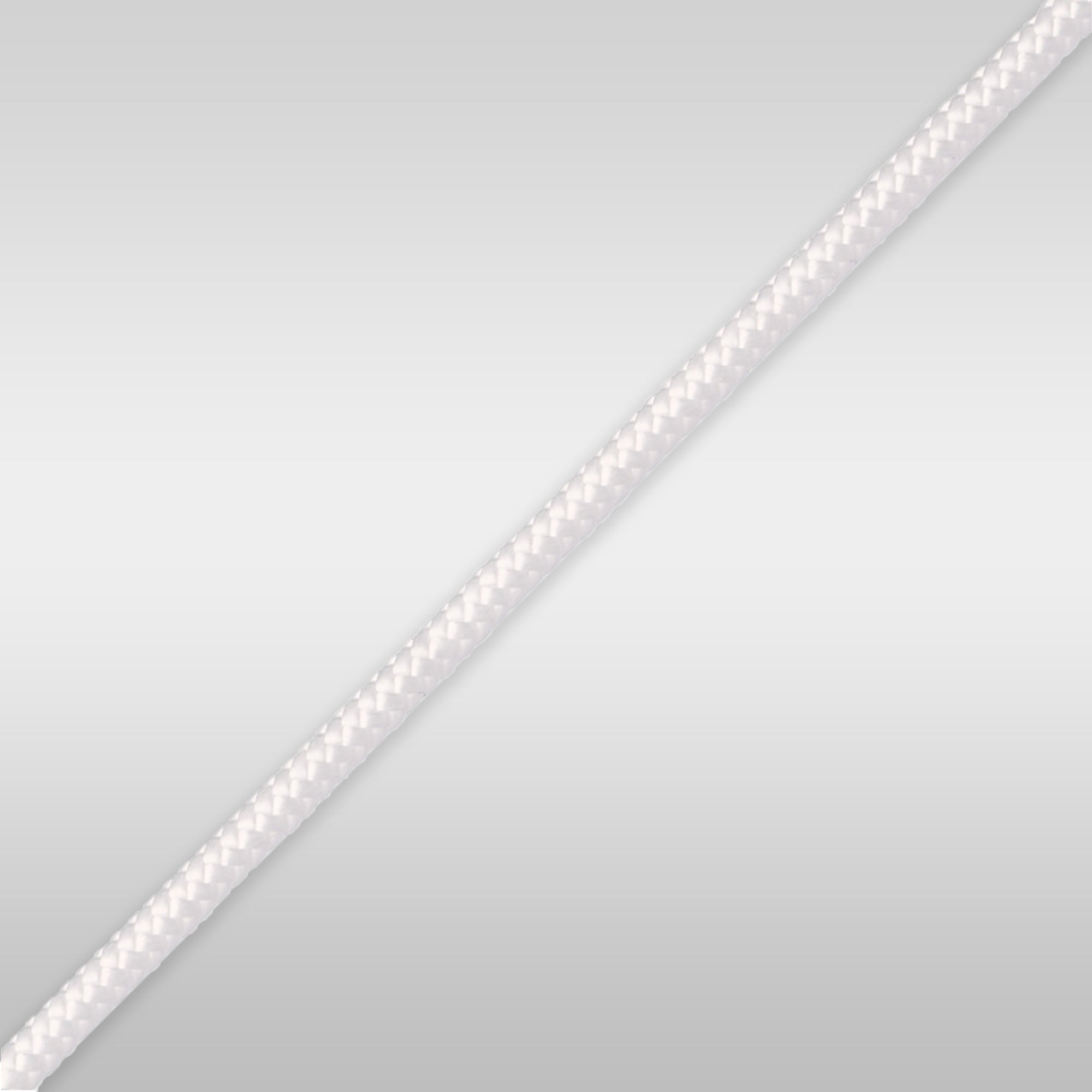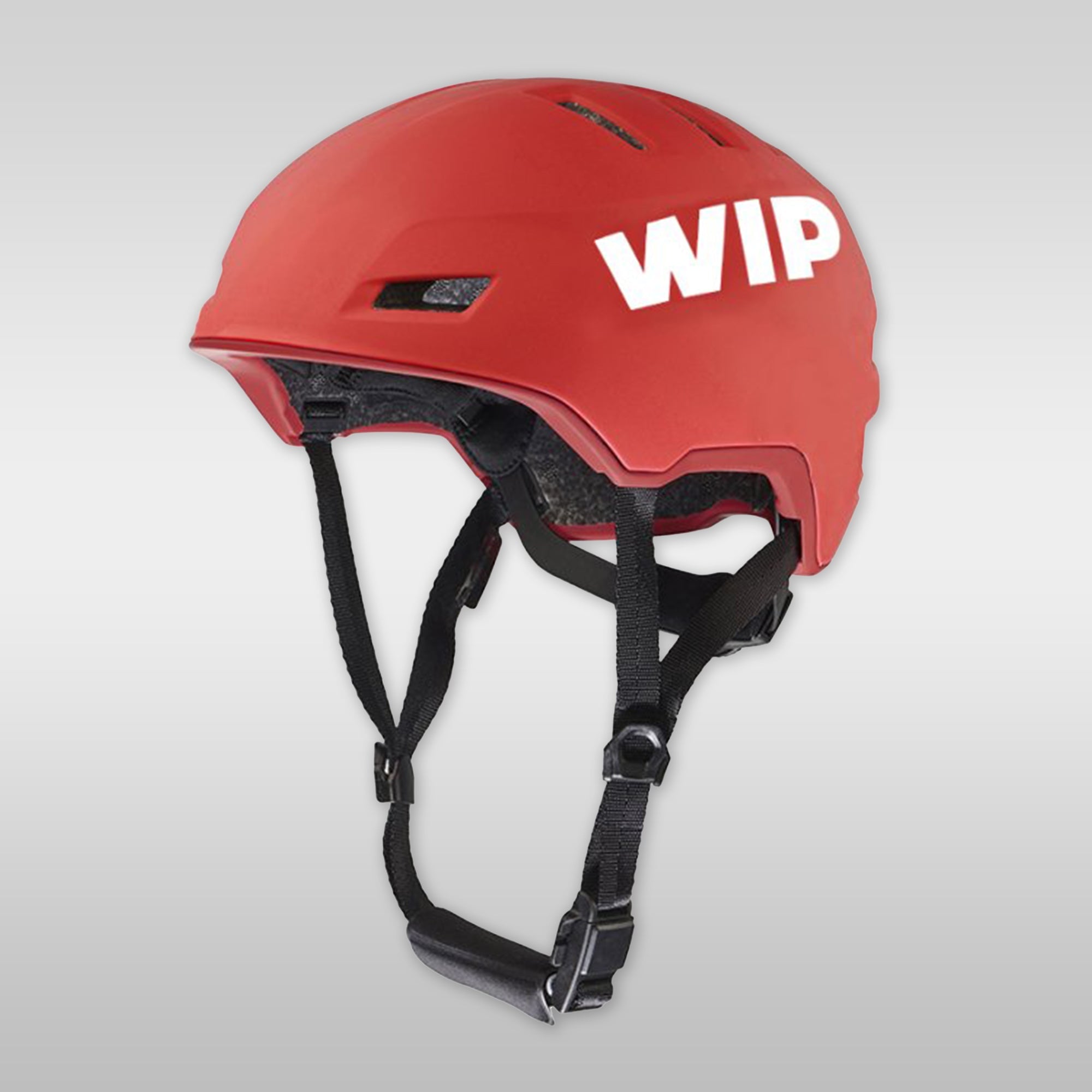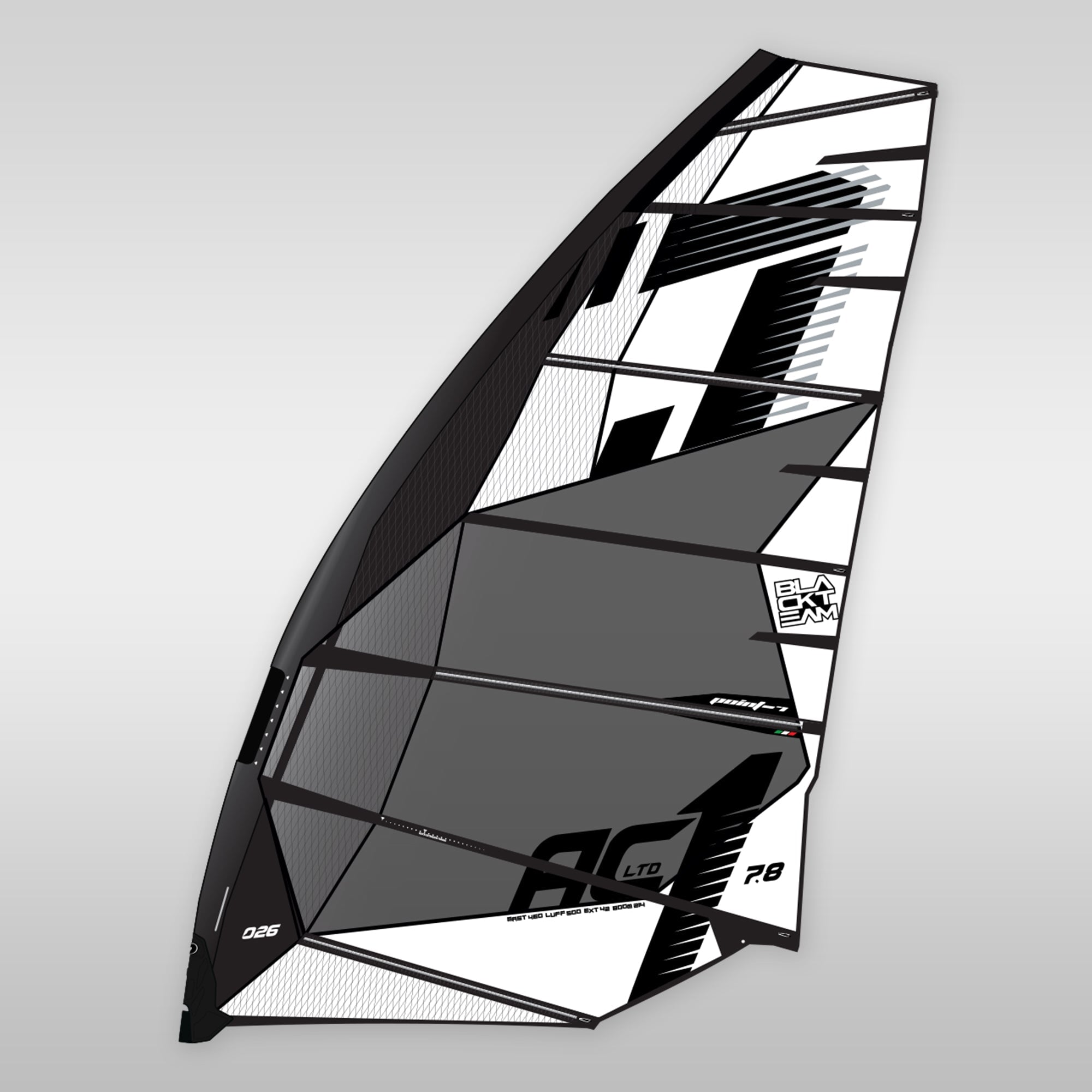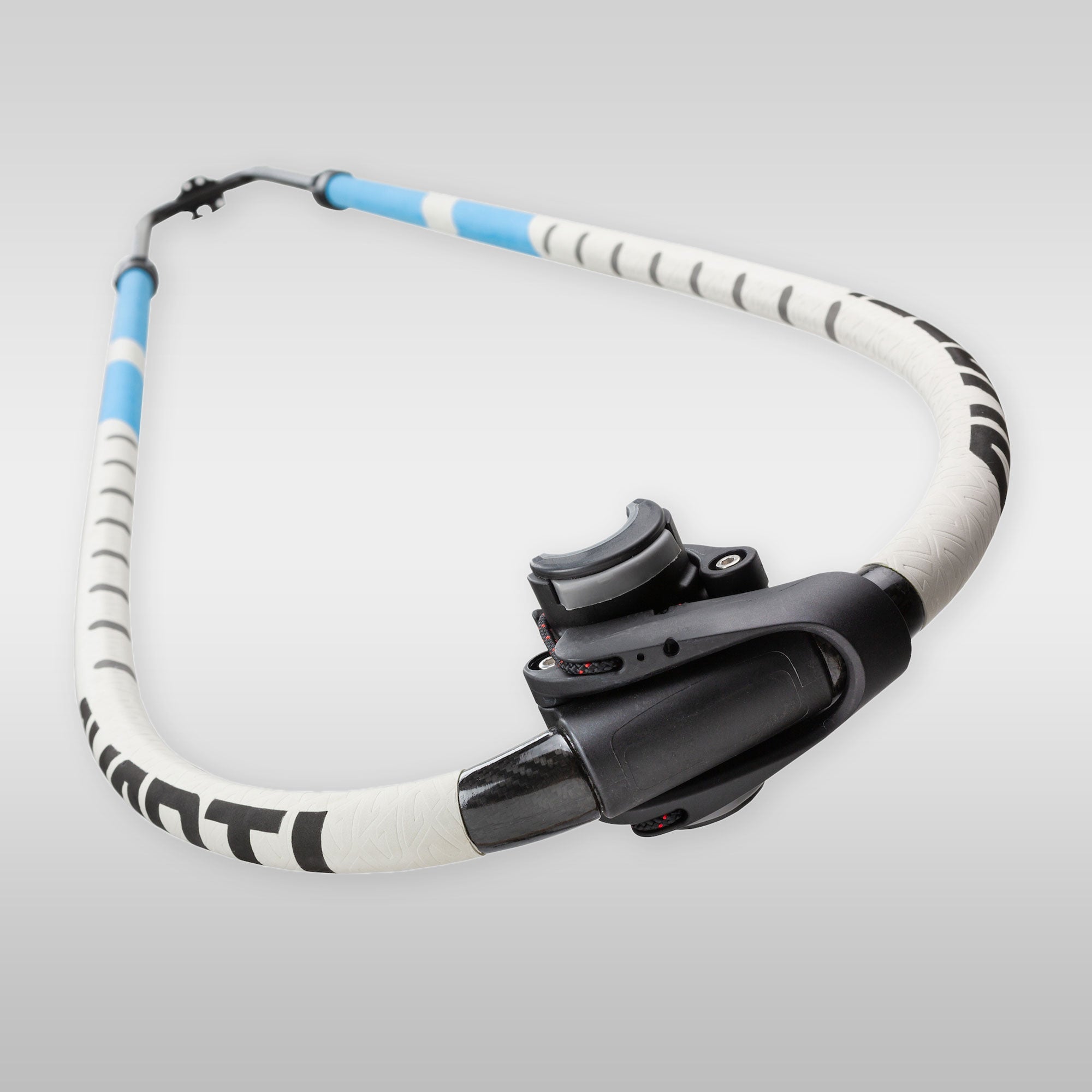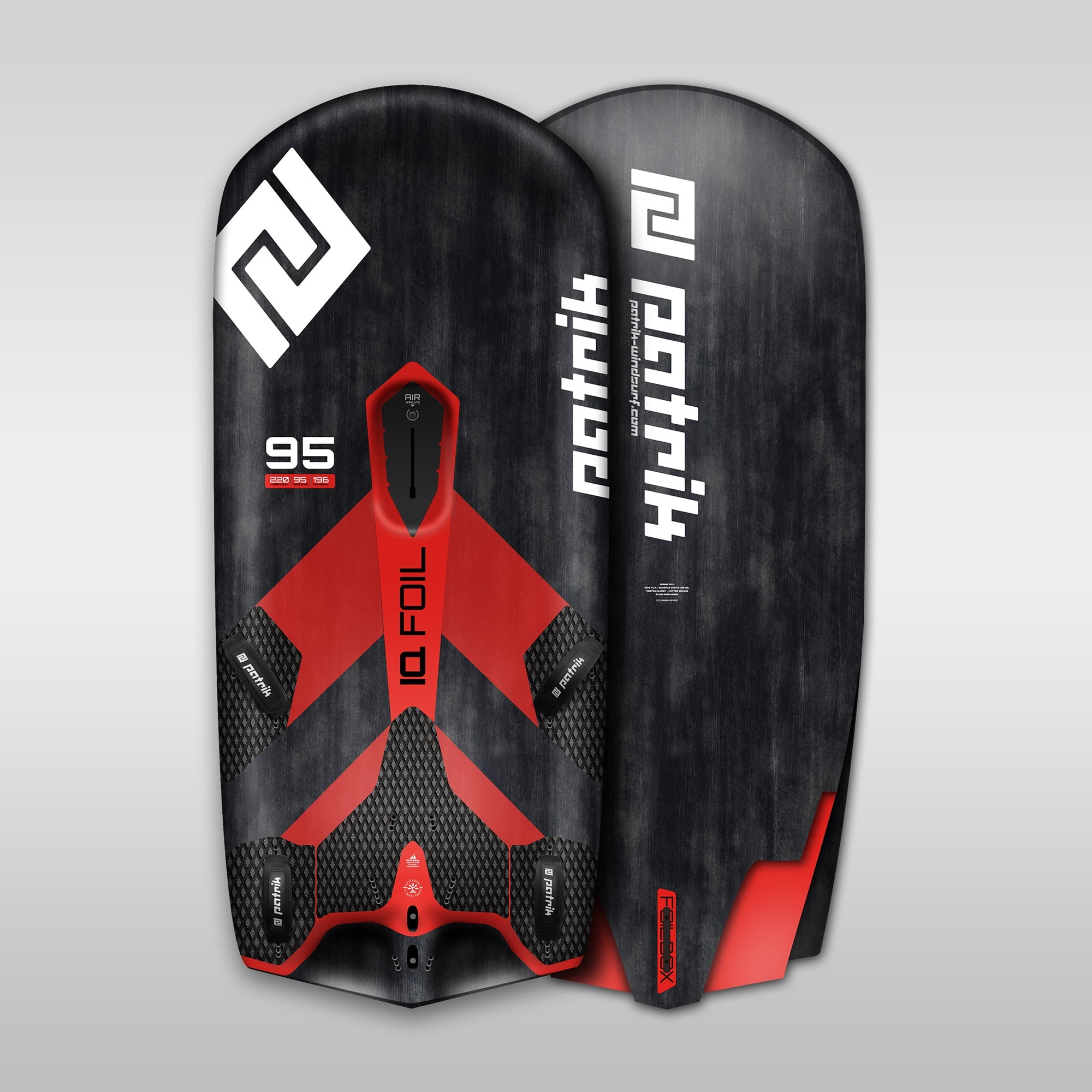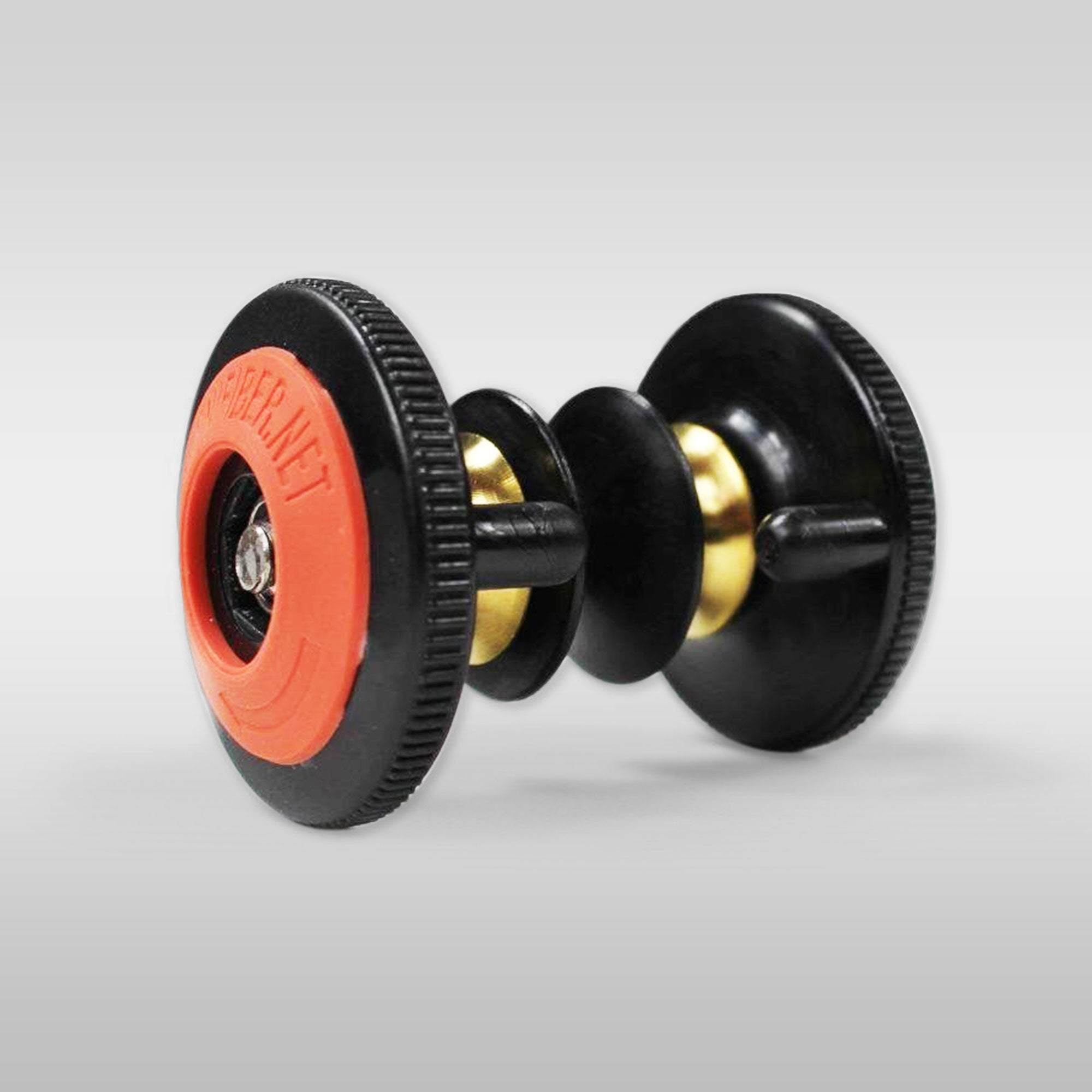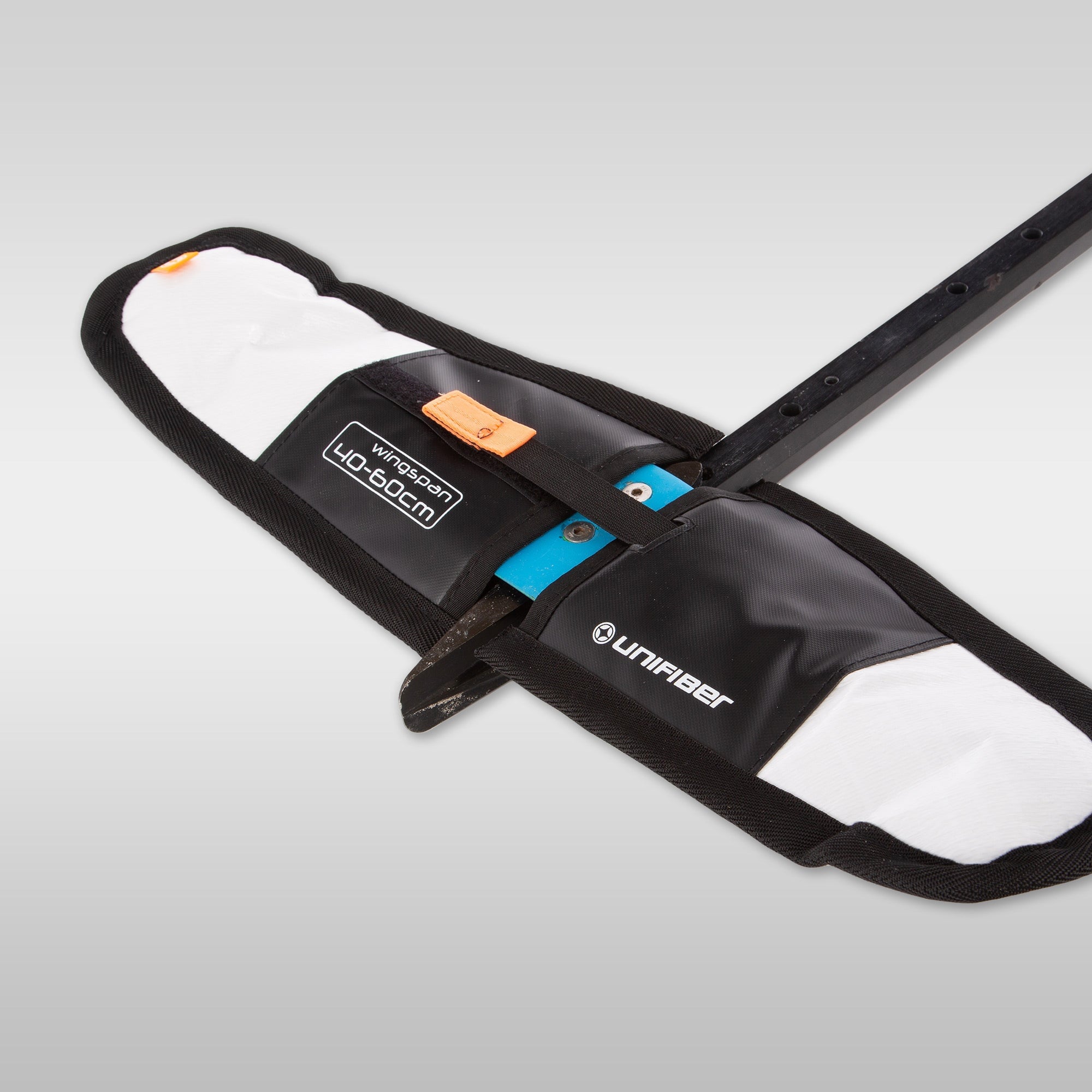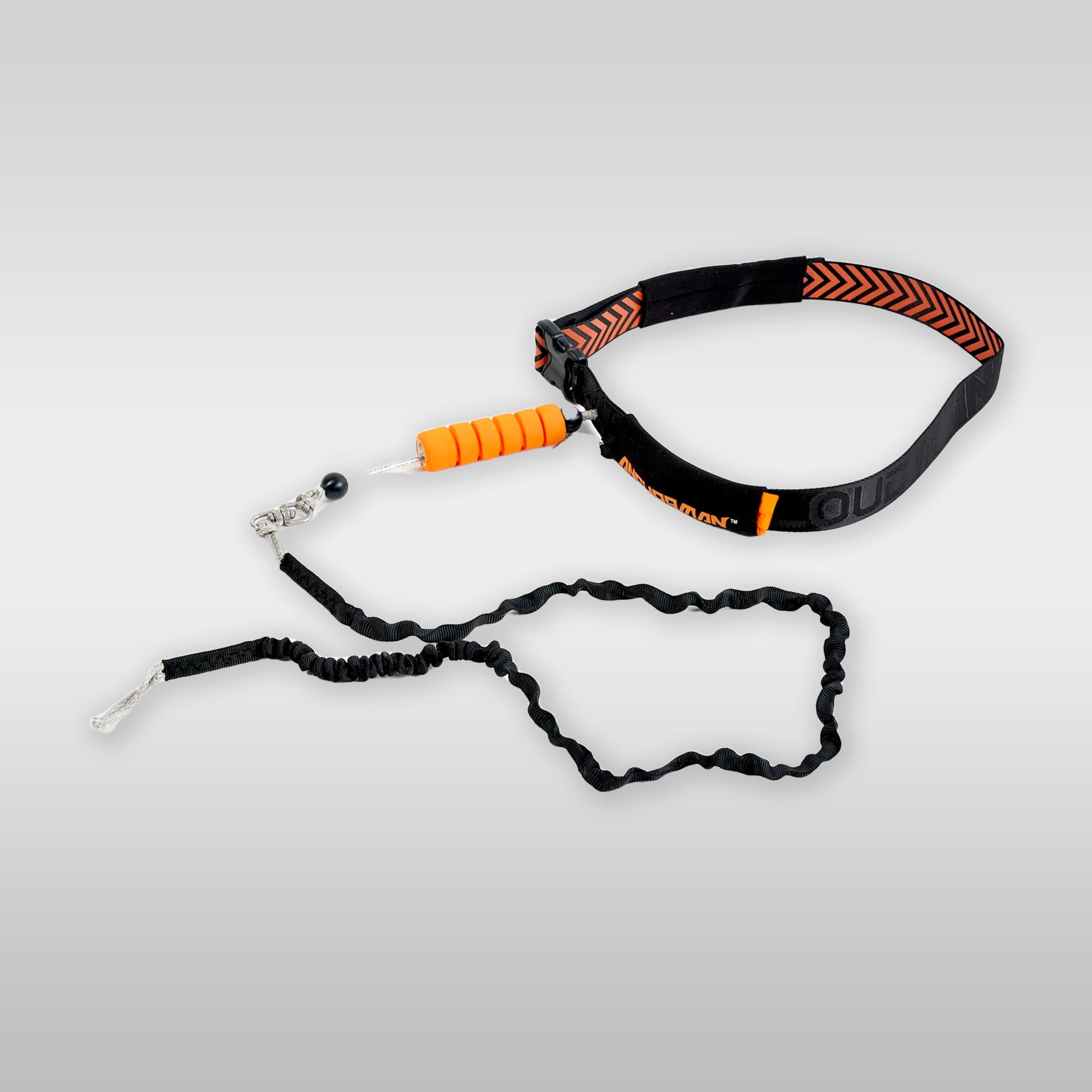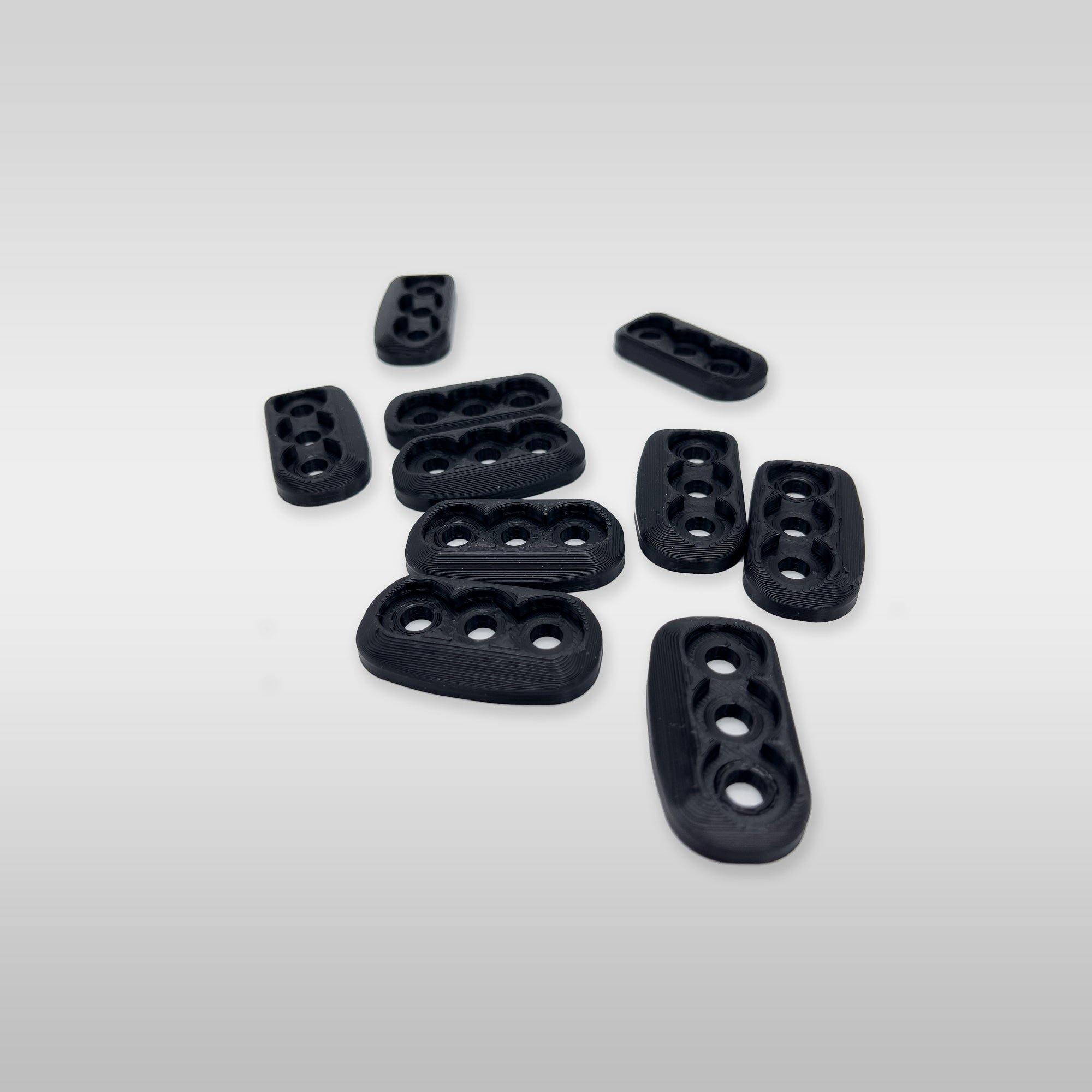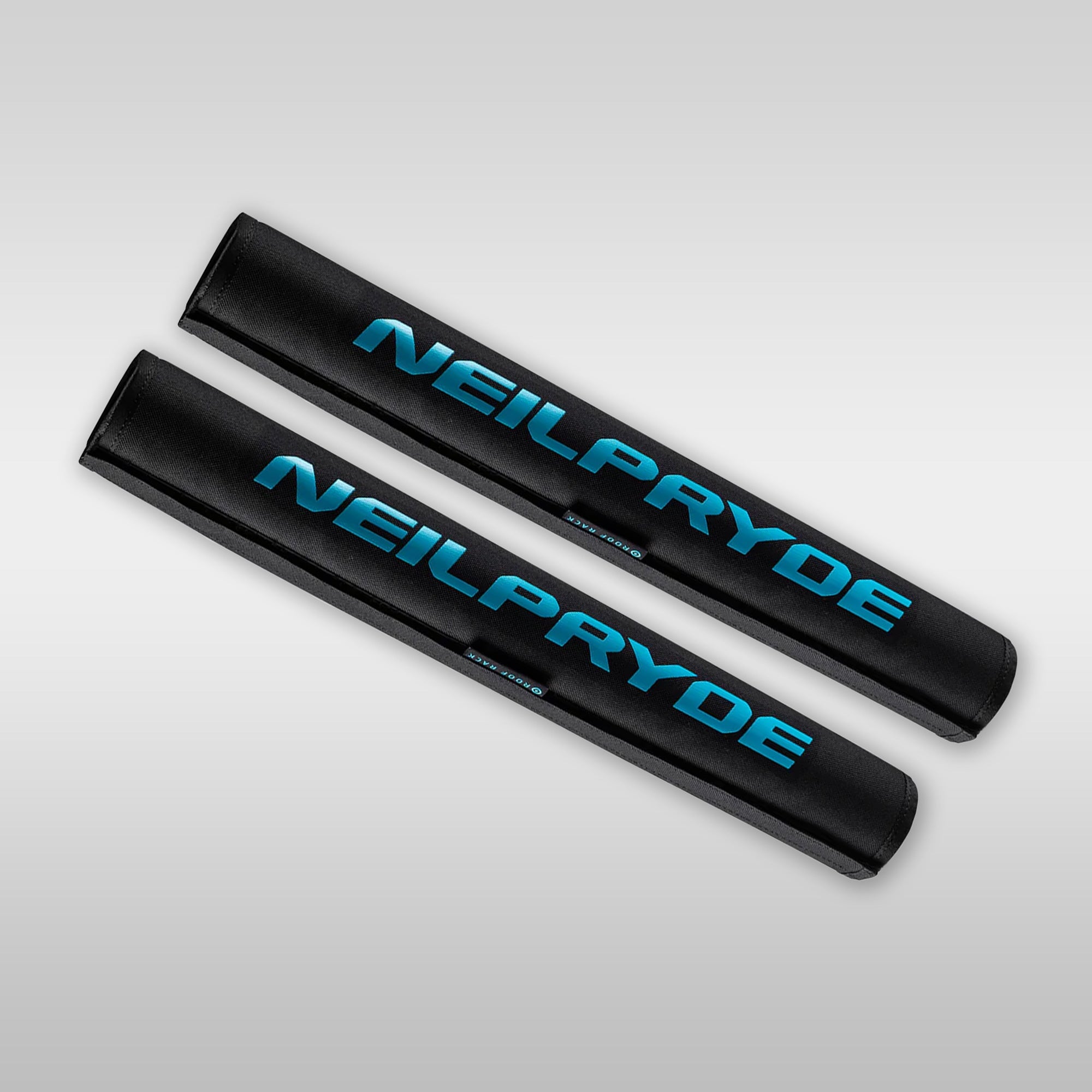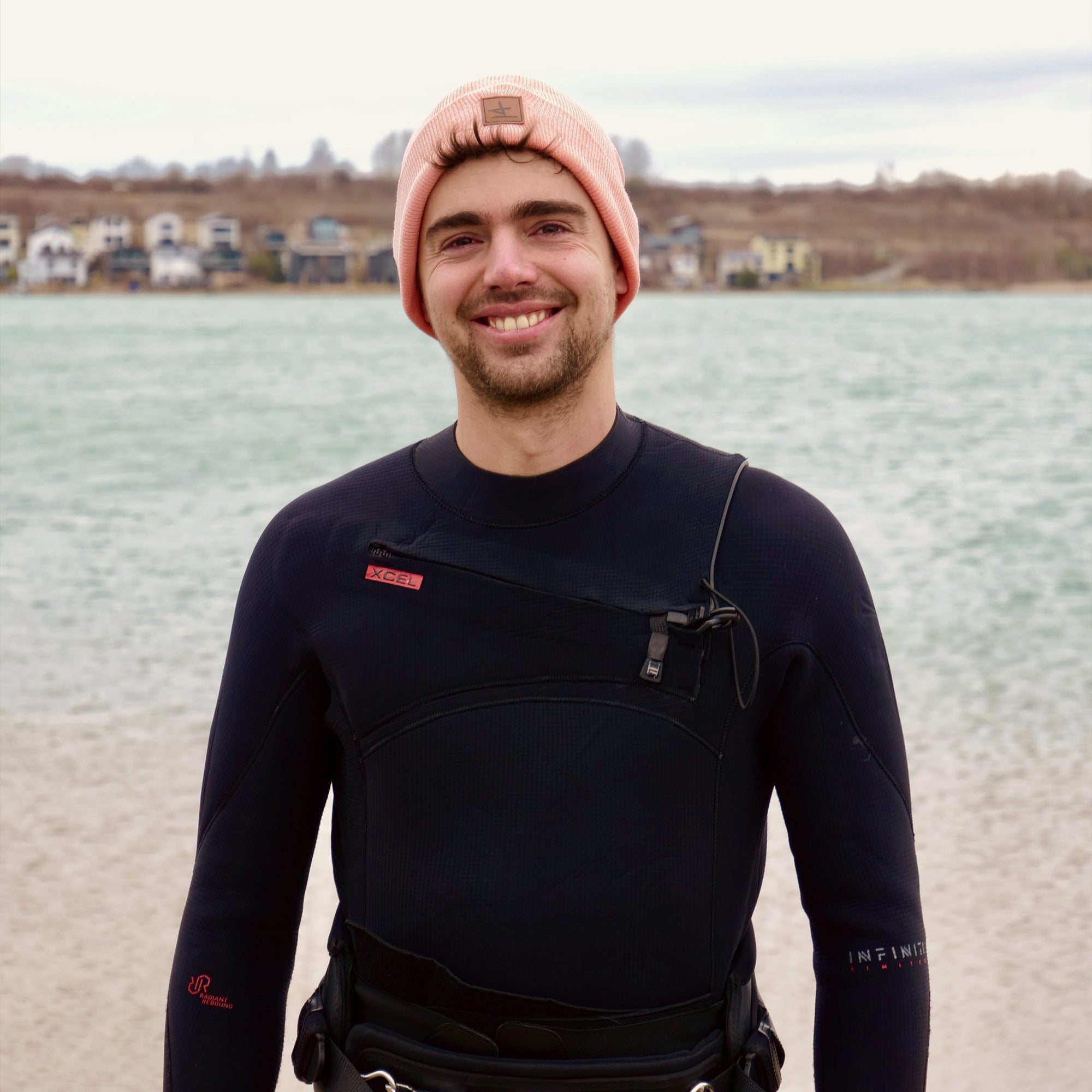We present the Future Fly White Tiger.
Pure freeracing
The Future Fly White Tiger is a pure freerace board. The board wants to be placed on the edge, fly over the water and maintain comfort despite its performance. Both the shape, the construction and the features of the White Tiger are geared towards this objective.
However, the White Tiger concept does not end with the board itself. This is just where the journey begins. With our service and video content, which you can access via a QR code on the board, we make sure that you 'really' fly over the water on the edge.
Developer comments
"After having developed hundreds of slalom boards, taking a step back and finding the right balance for a freerace board was a super fun challenge. Slalom is purely performance oriented, but freeracing brings in that element of easiness. As someone who has been hardcore racing all his life, this is truly something different. It made me smile so much to jump and blast with the Tiger, lets let everyone have fun with it!" - Arnon Dagan
"The development task was clear - we wanted to build a freeracer that would make it easier to enter the world of freeracing, but ultimately not just be characterized by compromises.
We have achieved that. The board is one thing, the other is to explain how everything works. I don't want anyone to buy this freerace board and end up not knowing how to use it or screwing the footstraps in so far that proper railing becomes impossible. The mission is to make access to fast, lively windsurfing as easy as possible!" - Mario Kümpel
|
|
|
|
|
| Volume | 115 liters | 125 liters | 137 liters |
| Width | 70 cm | 75 cm | 82 cm |
| Length | 238 cm |
|
236 cm |
| Weight | 7.2 kg | 7.4 kg | 7.8 kg |
| Fin Incl. | - | - | - |
| Box |
|
DeepTuttle (DTB) |
|
| Foil-Ready | No | Yes | Yes |
| Sail Range +-0.5 | 5.5 - 7.5 | 7.0 - 8.5 | 7.5 - 9.5 |
Riding characteristics of the boards:
White Tiger 115
At 115L, it is a "medium board" and is ideally suited to being fully extended in medium to strong winds. The 238 cm length is particularly noticeable when planing, which is noticeably easier compared to shorter slalom boards. As soon as the board gets going, it wants to pick up speed. The outer, rear loop positions allow you to do just that. If you don't dare to go there straight away, you can start with the center strap position further in and work your way outwards. This applies to all sizes of the White Tiger.
Once you've broken in, you experience what you usually only get as a slalom rider. Namely the combination of smoothness and speed. However, less physical effort is required than with slalom boards, as the construction cushions the chop somewhat and you have a smoother ride thanks to the length.
In the jibe, the board behaves a little less lively due to the approx. 7 cm extra length (compared to the slalom board). This can also be perceived as pleasant, especially for non-slalom riders. The length also makes it easier to glide through or into the jibe.
If you go for it and drop the sail with maximum pressure, then it gets really fast. We were able to reach speeds of over 35 knots in flat water. The classic 30 knots top speed that many freeracers dream of is therefore possible with the right trim and the right technique.
The compact feel is important to mention. This gives the 115 a lively, fiery temperament that makes you want to ride the board to its full potential as soon as you stand on it!
White Tiger 125
The all-rounder in the White Tiger family. Whether less or more wind, the 125 offers an enormous range. The combination of 125L and a length of 238 cm make planing effortless. On the other hand, the rest of the shape ensures that the board can be placed on the edge with ease as soon as you have power in the sail. This combination is particularly important in order to "get flying" with less energy than with pure slalom boards. Especially when it's not choppy at 20 knots, it's easy to get into race mode.
The on and off feeling is really cool, which you experience with the right wind and the right sail size. If you hang into the sail and apply pressure to the rear handle, the board releases from the water and can be ridden on the leeward edge like a slalom board. If you don't apply any pressure, the board still pulls up in a relaxed manner - but then it "lets go" and doesn't force you to maintain full body tension. This allows you to take a few relaxed turns before setting off on the next speed run.
During development, it also became clear that the 125 is a great board for learning glided jibes in the first place, because the rails forgive mistakes in the power jibe particularly well.
It is important to mention that the 125's sail range makes it particularly effective at spots with little to medium wind. If it does get choppy and you don't happen to have the 115 in the car, the 125 can be transformed into a speed machine in no time with a little tuning, which won't fly away even in the gusts!
White Tiger 137
Planing even earlier than with the 137 will be difficult - because "the big one" is a real light wind machine. Of course, the board is less compact than the 115 and 125 due to its size, but thanks to 2 cm less length, the sporty feel still comes into its own.
If the others can't get going because the wind is too weak, there's a good chance that the 137 will fly over the water. This is exactly what the 137 is made for and for riders who weigh a little more. If the wind is just enough, you can glide off and as soon as you get into the gust, the board becomes really fast. With a width of 82 cm, standing on the edge is quite easy - lean back with the correct trim, push against the fin and off you go.
The board is elegant, lively and easy to control up to the medium wind range, i.e. with sails up to 7.5 square meters. You get really fast and can devote yourself to jibes.
It is important to mention that the right fin makes an even bigger difference in less wind. The performance that a large board can deliver should therefore never be underestimated. The finesse required for tuning is generally only greater here than with smaller boards, as you can compensate less with strong winds. If in doubt, we will of course help you to fly over the water on the edge!
Shape & features
The shapes of all three boards are a fusion of classic, slightly longer freeracers and modern, lively slalom boards. All shapes are equipped with important features that contribute to performance and the service experience.
QR code content - You can access the (insert link) website via the QR code printed on the rear. Here you will find a list of tips, tricks and tutorials for your board. The content is always up to date with the latest Research & Development, so you can keep yourself informed about your board.
Chicken Strap - With the chicken strap positioned at the back and a little more mucked up, you can get used to the feeling of the White Tiger and switch to full throttle mode as soon as you are ready. For the experience of "railing" and "really fast surfing" you will ultimately need to use the outer footstrap positions.
Double plugs - All foot straps are fitted with the highest quality double plugs. There is guaranteed to be no rotation or twisting of the straps. This makes the ride feel much more direct. Another advantage is that you can still use the straps as Single to give you more adjustment options (which we only recommend to a limited extent).
Deck concave - The deck concave originates from race development. It lowers the center of gravity and pressure point of the rig, which provides more control. The White Tiger deck concave is equipped with a soft fade-out, so that your turns are not hindered and you also feel comfortable when bobbing.
Foil technology - The nose of the White Tiger is inspired by the Foil Race development. While it is "completely normal" in the lower section and has a harmonious curve at the bow, there is a special feature on deck. It flattens out slightly towards the nose and remains straight. In strong winds, this improves the aerodynamics (as with the most modern foil boards) and the typical "overpowered tailwalking" takes place later - because the airstream helps to stabilize the nose.
Heel stringers - Heel stringers are a standard high-end Future Fly Race feature. This reinforcement in the standing area prevents the deck from getting soft and significantly increases the durability of the boards.
Foil Box - The two large boards are equipped with a foil box. The boards are 100% developed for the fin, so they are only suitable for first attempts at foiling. However, if you still want to try flying, there is of course nothing to stop you.
Service - The Wind Lounge Service is also a matter of course for White Tiger customers. If our videos have not yet explained everything, we will be happy to help you at any time. This also includes topics such as "my board doesn't fly the way I want it to". If you have any questions, simply send us an email to willkommen@windlounge.de
Construction
Carbon - Robust carbon layers along the rails - from the Baseplate to the tail - ensure maximum impact resistance, increased rigidity and a particularly long service life. The nose is additionally reinforced with Carbon to provide better protection against impacts.
Targeted reinforcements - High-quality Italian Carbon carbon is used around the high-stress areas such as the Baseplate, fin box and foot straps. This keeps the board light, but at the same time very durable and direct in its handling. Integrated PVC stringers under the footstraps provide additional rigidity and long-lasting stability.
High-quality sandwich construction - Lightweight & robust: The deck and underside are made of 3 mm Swiss Airex PVC combined with 6oz fiberglass. In the fin box area, a double sandwich structure made of Airex, fiberglass and Carbon is used - for maximum strength in the areas subject to particular stress.
Additional functions - An original Girotex automatic valve reliably regulates the internal pressure - without any manual intervention. No bleed screw is required. (IMPORTANT! DO NOT TAMPER WITH)
Recommended Fins
The boards were tested with Fins from Future Fly, Z-Fins, Carpenter, Select and Kashy.
The base fin is the Future Fly x Wind Lounge SHPRITZ fin.
115 L + 38 cm / 125 L + 42 cm / 137 L + 44 cm
These Fins make railing particularly easy and do not require enormous effort to have fun. Built on the basis of a Z-fin and adapted for more comfort, this fin is a recommendation for all those who love freeracing.
If you want even more performance, there is no way around a custom slalom fin. Contact us for an individual Fins via e-mail at shop@windlounge.de.
Of course, the boards also ride with Fins from other brands. However, if in doubt, we recommend choosing a fin that comes from the Future Fly / Wind Lounge team themselves. The right fin can make a big difference to performance and is absolutely essential.
Recommended sail combinations
The White Tiger were developed for freeride, freerace and slalom sailing. As it is particularly important to us that our customers have the best possible experience on the water, we are more specific in our recommendations. If you are unsure, just ask us at any time, our team is here to help!
If the sails are within the size range specified below and are of the freeride, freerace or slalom type, all brands will work. It is important to tune the rig itself correctly and to match the trim to the board. Of course, particularly good performance is achieved on corresponding freerace & slalom sails.
We also tested the boards with 4.7 to 5.6 wave sails, which worked really well, especially on the 115. However, we do not primarily recommend wave sails.
Just because we don't recommend something doesn't mean that it will never work. Of course, this is about a general assessment and creating realistic expectations.
